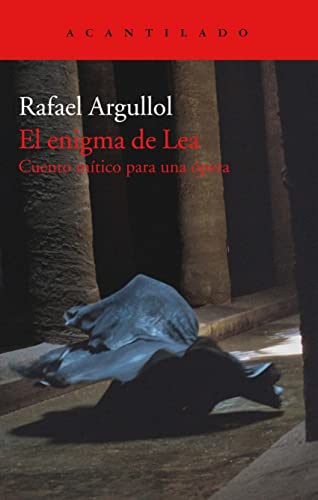Opera (Over 315,000 results)
Product Type
- All Product Types
- Books (298,113)
- Magazines & Periodicals (2,131)
- Comics (120)
- Sheet Music (7,151)
- Art, Prints & Posters (889)
- Photographs (1,809)
- Maps (66)
-
Manuscripts &
Paper Collectibles (4,788)
Condition
Binding
Collectible Attributes
- First Edition (13,347)
- Signed (2,181)
- Dust Jacket (10,807)
- Seller-Supplied Images (128,780)
- Not Printed On Demand (242,769)
Free Shipping
Seller Location
Seller Rating
-
Hortus Eystettensis, Sive Diligens et accurata omnium Plantarum, Florum, Stirpium, ex variis orbis terræ partibus, singulari studio collectarum quæ in celeberrimis viridariis arcem episcopalem ibidem cingentibus, hoc tempore conspiciuntus delineatio et ad vivum repræsentatio Operâ Basilii Besleri Philiatri et pharmacopoei. M.D C.XIII
Published by K. Bauer, Nuremberg (and Altdorf), 1613
Seller: Arader Books, New York, NY, U.S.A.
First Edition
Hardcover. Condition: Good. First. First edition, variant A. Two volumes. [Nuremberg (and Altdorf): K. Bauer,] 1613. Broadsheet folio (21 1/8" x 17 1/8", 540mm x 434mm). [Full collation available.] With 369 of 371 engraved plates; an engraved title and 4 class (i.e., season)-titles plus 364 (of 366) botanical plates, all but one (the upper portion of the "Martagon imperiale," blank verso) with text verso. Lacking 2 privilege leaves and one leaf of the German index to the Summer section. Bound in later (XVIIIc?) half mottled calf over magenta paste-paper. On the spine, six raised bands. Author and title gilt to green morocco in the second panel, number gilt to beige morocco in the third, paper shelf-label to the sixth. All edges of the text-block speckled red-and-black. General wear to the extremities, with some bumps. Head- and tail-pieces of vol. II splitting. Internally, dampstaining to the first three dozen leaves of vol. I, mostly moderate but occasionally heavy, and to the last three dozen leaves, mostly mild. Concomitant marginal chipping and earlier campaigns of (excessive) repair to those leaves. Worming at the gutter of the title-leaf through )(1 (4 leaves) of vol. I, not affecting the text. Vol. II superior, albeit with passages of soiling and water-staining around Kk)()(2. A handful of leaves trimmed at the fore. Lacking five leaves. In vol. I: the two privilege leaves and B4)(1 (fol. 2 of the 5th order of Spring, the text of the Corona Imperialis recto and the plate of the Corona Imperialis Polyanthos verso). In vol. II: Dd14)(2sub1 (fol. 4 of the 14th order of Summer, the text of the Caryophyllus flore maiore recto and the plate of the Caryophyllus multiplex verso) and one leaf of the German index to the Summer section (Ff1). Armorial bookplate of the St. Cuthbert's College, Ushaw ("Ex libris bibliothecæ collegii Sancti Cuthberti") to the front paste-down of each volume with (their?) shelfmark above (vol. I) or opposite (vol. II) in graphite, with copious booksellers' notes to the recto and verso of the free end-paper of vol. I. Basilius Besler (1561-1629) was born a little before the death of Leonhart Fuchs, the last of the three German fathers of botany -- Brunfels and Bock preceding him -- and his magnum opus, the Hortus Eystettensis, shows just how far the discipline had come in the Protestant North of Europe. Besler was a Nuremberg apothecary, which in the period was nearly synonymous with being a botanist; medical treatments were largely compounded from botanical "simples." Eichstätt, some 35 miles south of Nuremberg and 50 miles north of Munich, was the seat of the Catholic Prince-bishop Johann Konrad von Gemmingen (1561-1612) and his botanic gardens, then the most splendid in Germany. From 1598 Besler managed Gemmingen's gardens at Willibaldsburg castle. The Prince-bishop did not survive to see the book published in early 1613; the earliest issues are still dedicated to him (as is the present copy), whereas later ones have a dedication to his successor, Johann Christoph von Wetterstetten. There are further distinctions of issue; the present one, with text printed on the same sheet as the plates, as well as versions with text on separate leaves -- usually called the de luxe edition, meant as gifts, and nearly always colored -- or altogether absent. The engraving itself -- carried out principally by Wolfgang Kilian -- is of an exceptional standard. Unlike much engraving of the period, which includes etching, the plates of the Hortus are executed purely with the burin (graver). The images are some of the most celebrated Renaissance flower-portraits, especially the full-page sunflower. In the Summer and Autumn classes are many New World plants, including melons and peppers. The present example was in the library of St. Cuthbert's College, Ushaw in Co. Durham, a seminary founded in 1808. Purchased at Sotheby's London 17 November 2005, lot 60. Nissen, BBI 158; Pritzel 745; Stafleu-Cowan 497; VD17 39:126168X (var. A).
-
A magnificent and very rare, early 18th century, 46 cm. (18 inch.) celestial table globe produced by Gerard and Leonard Valk. First state. Made up of a set of beautiful original hand coloured, copper engraved gores. With a wooden horizon ring; a highly unusual two pointer brass hour ring (a small, thin metal circle on the top of a globe, divided into 24 segments and imprinted or engraved with the hours of the day and night. By turning it, one can calculate the time difference between various locations on the globe); a graduated brass meridian ring, and four stunning fluted table legs complete with circular, turned ebony feet; resting on sturdy cross-stretchers; an ebony central stand; a base consisting of beautiful circular rings of segmented (wood), inset with alternate concentric circles of an ornate and pleasing floral design. Height 71cm. (28 inch.); TITLE (translated): Uranographia, showing a most accurate depiction of the constellations and the conspicuous stars in the individual constellations, which is adapted from the observations of the matchless astronomer Johannes Hevelius for the end of the year 1700. Moreover, by a new method invented by Lotharius Zumbach, Doctor of Medicine and a famous mathematician, the horizon at the meridian of Amsterdam is added, showing accurately for more than 200 years the syzygies of the moon, as well as the common years and the bissextiles. By the labour and enthusiasm of Gerard and Leonard Valk from Amsterdam, 1715. With privilege. DEDICATION (a leaf encircled cartouche between Hydra and Argo.): VIRO / AMPLISSIMA DIGNITATE / ac / MERITORUM SPLENDORE / CONSPICUO / IOHANNI TRIP, J.U.D. / Reipublicae Amstelaedamensis / CONSULI GRAVISSIMO, / Societatis Indiae Orientalis / MODERATORI INTEGERRIMO, / Toparchae in berkenrode / IUSTISSIMO, / &c. / URANOGRAPHIAM / hic ea, qua par est, / reverentia / D.D.D. / GERHARDUS et LEONHARDUS / VALK. (Translation): To Johannes Trip, J.U.D., a man noteworthy for is most splendid deserts and for the brilliance of his virtues, the most eminent consul of the State of Amsterdam, the incorruptable director of the East India Company, most upright Lord of Berkenrode, etc., the Uranographia is given and dedicated with equal reverence, by Gerhard and Leonard Valk. Complete with the Equator, the tropics, the polar circles, a half equinoctal colure, a half circle of declination through 30 degrees. Ecliptic, circles and parallels of latitude every 5 degrees. The equator and ecliptic are graduated. The stars / constellations are represented as their figures, and their names are displayed in Latin. There is a legend that is crowned by the sun. There is an attractive "Sextans Uraniae" situated just below "Leo." Established at the end of the previous century by Gerard Valk, and assisted by his son Leonard, the firm became the only publisher of globes in the Netherlands in the 18th century. In Amsterdam Gerard began his publishing firm producing maps and atlases in co-operation with Petrus Schenk about 1680. It was about 30 years later that he began to publish globes with his son. After the death of Leonard, the firm continued under the stewardship of his widow, Maria Schenk, and towards the end of the 18th century the globe factory came in to the possession of Cornelis Covens. The globe is in fine condition, cleaned and revarnished, the gold embossing has been supplemented in certain places. The colouring is fine and original, as has a lovely looking aged patina . The celestial figures are finely engraved and rendered in truly glorious and eye-catching detail, including gold embossing to the stars and some constellations, and to the decorative sextant. Provenance: private collector from The Netherlands.
-
Opera
Published by Rome, Conradus Sweynheim and Arnoldus Pannartz, Rome, 1468
Seller: MEDA RIQUIER RARE BOOKS LTD, London, United Kingdom
Condition: Buono (Good). Book.
-
Ten first (1599-1668) and three later (1634-1638) editions forming the complete works of Ulisse Aldrovandi (1522-1605), an Italian botanist, pharmacologist and a professor of botany at the university of Bologna. This massive encyclopaedia, most volumes published posthumously, was based on natural history specimens and drawings in Aldrovandi's own museum in Bologna. Already in the 1570s he welcomed visitors from near and far to his museum and at his death in 1605 he left it to the city of Bologna, making it the first institutional herbarium.Aldrovandi, hailed as the "Pliny of his time", was the author of several encyclopaedic works on natural history, the Opera being his most extensive work and also the largest collection of natural history illustrations published before the 18th century. Many of the illustrations in these 13 volumes are the work of Jacopo Ligozzi. The original drawings are still in Bologna and have been made available online. The Aldrovandi herbarium was the biggest of the 16th century herbaria and gives the most complete picture of the plant world as known at the time in Italy.A detailed list of contents is available upon request.In very good condition, with some waterstains and occasional browning. One volume has the head of the backstrip restored and several have cracks in the hinges, but the bindings remain good.l Adams A-647; BMC NH I, pp. 26-27; Nissen, BBI 14; Nissen, IVB 18; Nissen ZBI 66, 68, 70, 72, 74-78; for Aldrovandi's museum: Findlen, Possessing nature, pp. 17-31; Stafleu & Cowan, pp. 28-29.
-
OMNIA PLATONIS OPERA [In Greek] Edited by Marcus Musurus (c.1470-1517). -Timaeus Locrus, in Greek [Hellenistic paraphrase of the Timaeus in Doric dialect]. - DIOGENES Laertius (1st half of the 3rd century A.D.). Vita Platonis, in Greek.
Published by Venice Aldus Manutius and Andreas Torresanus September, 1513, 1513
Seller: Buddenbrooks, Inc., Newburyport, MA, U.S.A.
First Edition
The Editio Princeps, the First Edition of the Works of Plato in Greek. Folio (312 x 194mm), beautifully bound in its contemporary limp vellum binding, with hand calligraphy to the spine panel, yapp edges. 15 unnumbered leaves, without leaf 16 blank; 502 pages, without the final blank; 439 pages. Aldine anchor device (Fletcher f4) to title-page and verso of the last leaf. A superb copy in excellent condition. Very rare thus, in its original binding, some leaves with very sophisticated, very sympathetic expert re-margining at the bottom outside corners where loss occurred at some time. The restoration has been brilliantly accomplished and is nearly imperceptible. VERY RARE AND IMPORTANT. THE FIRST ALDINE EDITION OF PLATO. THE EDITIO PRINCEPS AND A UNIQUE AND IMPORTANT COPY. As Marsilio Ficino dedicated his Latin translation of Plato to Lorenzo de Medici so Manutius dedicates his Greek edition to the son of Lorenzo, Giovanni, who became Pope Leone X in march. Aldus places his hopes for the foundation of his Academy in the new pope, as he says in the dedicatory epistle of his edition of Greek Orators, published in the same year: "may you watch over us and take care of our mission, which deserves the help and favours of the highest statesmen, indeed may you, Supreme Pontiff, found this Academy, as perpetual good for mankind, in the city of Rome." The Platonic Dialogues are preceded by the "Life" of Plato by Diogenes Laertius and followed by a Greek hymn by Marco Musuro, publisher of the edition together with Manutius. In 1513, Manutius printed the Editio Princeps of Plato which he dedicated to Pope Leo X in a preface eloquently and earnestly comparing the miseries of warfare and the woes of Italy with the sublime and tranquil objects of the student's life.The printings of Plato done through the years 1484-1485, were issued in parts, and the printing of 1491 was printed in book form (please see mention in next paragraph). These editions were published and printed in the Latin language rather than in the Greek (see the next paragraph for information on the printing and translation of Plato out of the original Greek manuscripts). In 1462 by order and gift of Cosimo de Medici and with support of the Academy the manuscript translations of Plato's philosophical writings.his Dialogues.were begun. They were concluded under the beneficence of Lorenzo the Magnificent. The translation, which was completed in the 1470's contributed in great measure to the rediscovery of critical thinking and of the disciplines of Greek scholarship. Marcello Ficino had begun his translation under the patronage of Cosimo de Medici in 1463. The work was completed five years later and circulated in manuscript for several years before finally being printed in parts beginning in 1484. It wasn't until 1491 that an edition brought together for the first time the fundamental text of Plato with Ficino's PLATONICA THEOLOGIA, the most important Renaissance interpretation of the great philosopher. In this groundbreaking work Ficino sets out to prove that a harmony can be found between Christian theology and Platonism. The conversion of these two modes of thought, the classic and the medieval was instrumental in the formation of the modern European identity. The importance Ficino placed on this work even extended to the printing and he was not pleased with the first edition which contained 7 pages of corrigenda. In contrast, Ficino was very pleased with the typographical correctness of the later 1491 edition and this printing in large measure comes with the most important of the textual corrections and emendations and changes. So, it was not, until 1513, when Aldus undertook the project, that the "Works",or "Opera" of Plato, the Omnia Platonis Opera, was published in the original Greek language of its author. This printing by Aldus was the true first printing of the original writings of Plato, in their original tongue. The printing of the Editio Princeps was one of the most important projects ever undertaken by Aldus, and represents, along with his printing of Aristotle's works, the consummate offering of the greatest philosophers of all time. The importance of Aldo's success in bringing the original language of Plato to the reader is one of the most significant accomplishments of the Aldine Press. The leading publisher and printer of the Venetian High Renaissance, Aldus set up a definite scheme of book design, produced the first italic type, introduced small and handy pocket editions of the classics, and applied several innovations in binding technique and design for use on a broad scheme. The use of the Greek fonts used in the printing of the text by Aldus is appreciated as one of the singular greatest accomplishments in all of printing history. It was Manutius' ambition to secure the literature of Greece from further loss by committing its chief masterpieces to type. The preface to his editions were written in Greek. Greeks from Crete, collated manuscripts, read proofs, and gave models of calligraphy for casts of Greek type. Not counting the craftsmen employed in purely manual labour, Manutius entertained as many as thirty of these Greek assistants in his family. "The entire western philosophical tradition has been described as a footnote to Plato, but his importance was particularly felt in the Renaissance, where his newly-rediscovered ideas percolated across intellectual communities and laid the groundwork for both the empiricism of the Enlightenment as well as a robust esoteric tradition. Only the Phaedo, Meno, and a paraphrase of the Timaeus were available to the Latin West for much of the Middle Ages until the groundbreaking Latin translation of the complete works by Marsilio Ficino. For this first Greek edition, the great Cretan scholar Marcus Musurus edited the text, working from high quality manuscripts belonging to Cardinal Bessarion. In the dedication, Aldus sets out a vision for classical studies and the foundation of a.
-
Opera, quae quidem extant, omnia . nuncque primum & Graece Latine in lucem edita . adiecta quoque sunt Eutocii Ascalonitae in eosdem Archimedis libros commentaria item Graece & Latine, nunquam antea excusa
Published by Joannes Hervagius, Basle, 1544
First Edition
First edition. PMM 72 - 'GIVE ME A PLACE TO STAND, AND I WILL MOVE THE EARTH'. First edition of one of the key scientific books of the Renaissance, representing a decisive step forward in the history of mathematics, containing the first printings of the majority of the surviving works of the greatest mathematician, physicist and engineer of antiquity. This book constitutes "the first printing of the original Greek text of seven Archimedean mathematical texts, accompanied by Jacopo de Cremona's Latin translation from a manuscript corrected by Regiomontanus, and the commentaries (in both Greek and Latin) of the sixth-century mathematician Eutocius of Ascalon" (Norman). "Archimedes - together with Newton and Gauss - is generally regarded as one of the greatest mathematicians the world has ever known, and if his influence had not been overshadowed at first by Aristotle, Euclid and Plato, the progress of modern mathematics might have been much faster. As it was, his influence began to take full effect only after this first printed edition which enabled Descartes, Galileo, and Newton in particular to build on what he had begun" (PMM). The seven treatises included in the present work are: On the Sphere & Cylinder; On the Measurement of the Circle; On Conoids & Spheroids; On Spirals; On the Equilibrium of Planes (and Centres of Gravity); The Arenarius, or Sand-Reckoner; and On the Quadrature of the Parabola. "Publication of this editio princeps inspired a multiplication of texts on Archimedes and his methods, which exerted a strong influence on the development of mathematics during the sixteenth and seventeenth centuries. One of the important effects of that influence can be seen in Kepler's Astronomia nova (1609), in which Archimedes' so-called 'exhaustion procedure' was applied to the measurement of time elapsed between any two points if Mars's orbit" (Norman). "Apart from one small tract published in 1503 and an imperfect edition by Tartaglia in 1543, [this] is the first complete edition of Archimedes' works" (PMM). This volume also includes for the first time the description of the heliocentric system of Aristarchus, who had conceived this theory centuries before Copernicus. "The principal results in On the Sphere and Cylinder (in two books) are that the surface area S of any sphere of radius r is four times that of its greatest circle (in modern notation, S = 4Ï r2) and that the volume V of a sphere is two-thirds that of the cylinder in which it is inscribed (leading immediately to the formula for the volume, V = 4/3Ï r3). Archimedes was proud enough of the latter discovery to leave instructions for his tomb to be marked with a sphere inscribed in a cylinder. Marcus Tullius Cicero (106-43 BC) found the tomb, overgrown with vegetation, a century and a half after Archimedes' death. "Measurement of the Circle is a fragment of a longer work in which Ï , the ratio of the circumference to the diameter of a circle, is shown to lie between the limits of 3 10/71 and 3 1/7. Archimedes' approach to determining Ï , which consists of inscribing and circumscribing regular polygons with a large number of sides, was followed by everyone until the development of infinite series expansions in India during the 15th century and in Europe during the 17th century. That work also contains accurate approximations (expressed as ratios of integers) to the square roots of 3 and several large numbers. "On Conoids and Spheroids deals with determining the volumes of the segments of solids formed by the revolution of a conic section (circle, ellipse, parabola, or hyperbola) about its axis. In modern terms, those are problems of integration. "On Spirals develops many properties of tangents to, and areas associated with, the spiral of Archimedes-i.e., the locus of a point moving with uniform speed along a straight line that itself is rotating with uniform speed about a fixed point. It was one of only a few curves beyond the straight line and the conic sections known in antiquity. "On the Equilibrium of Planes (or Centres of Gravity of Planes; in two books) is mainly concerned with establishing the centres of gravity of various rectilinear plane figures and segments of the parabola and the paraboloid. The first book purports to establish the 'law of the lever' (magnitudes balance at distances from the fulcrum in inverse ratio to their weights), and it is mainly on the basis of that treatise that Archimedes has been called the founder of theoretical mechanics. Much of that book, however, is undoubtedly not authentic, consisting as it does of inept later additions or reworkings, and it seems likely that the basic principle of the law of the lever and-possibly-the concept of the centre of gravity were established on a mathematical basis by scholars earlier than Archimedes. His contribution was rather to extend those concepts to conic sections. "Quadrature of the Parabola demonstrates, first by 'mechanical' means and then by conventional geometric methods, that the area of any segment of a parabola is 4/3 of the area of the triangle having the same base and height as that segment. "The Sand-Reckoner is a small treatise that is a jeu d'esprit written for the layman-it is addressed to Gelon, son of Hieron [see below]-that nevertheless contains some profoundly original mathematics. Its object is to remedy the inadequacies of the Greek numerical notation system by showing how to express a huge number-the number of grains of sand that it would take to fill the whole of the universe. What Archimedes does, in effect, is to create a place-value system of notation, with a base of 100,000,000. (That was apparently a completely original idea, since he had no knowledge of the contemporary Babylonian place-value system with base 60.) The work is also of interest because it gives the most detailed surviving description of the heliocentric system of Aristarchus of Samos (c. 310-230 BC) and because it contains an account of an ingenious procedure that Archim.
-
Woodcut vignette on title, two engraved headpieces, five folding engraved plates, & woodcut diagrams in the text. 6 p.l., 210, [3] pp. Folio, early 19th-cent. half red morocco & red boards (minor browning), flat spine gilt. Toulouse: J. Pech, 1679. First edition, and now rare on the market; this copy belonged to Dominique François Jean Arago (1786-1853), the great French scientist who made important contributions to astronomy, electro-magnetism, and optics (see D.S.B., I, pp. 200-03). This book, Fermat's only substantial publication apart from his edition of Diophantus (both prepared and published posthumously by his son), contains the majority of Fermat's mathematical work. Included are Fermat's important researches on analytic geometry, developed concurrently with, but independently of, Descartes, as well as his method of maxima and minima, based upon which some have proclaimed Fermat the true first discoverer of the differential calculus. It also includes the first printing of Fermat's important correspondence with Pascal which founded the modern theory of probability. There is also correspondence with other contemporary mathematicians, including Mersenne, Roberval, Wallis, Digby, and Gassendi. Although Fermat published practically nothing during his lifetime, his work was freely communicated to others in correspondence and was profoundly influential. Descartes and Pascal notwithstanding, many scholars regard Fermat as the greatest of all 17th-century French mathematicians. Fermat (1601-65), was shy of publicity and reluctant to communicate his findings. As a result, his discoveries remained comparatively unappreciated until the 19th century when they catalyzed the development of modern algebra. The title-page is in Horblit's second state (no preference), while leaves a2 and e2 are in his first state (no preference). The rare portrait of Fermat, not present here, was also not found in the Horblit, Honeyman, or Norman copies. A small minority of copies have the portrait; it was printed in a much larger format than the book and was probably intended only for large paper copies, of which a few survive (e.g. one of the two BL copies). A very good and crisp copy. With the signature of Arago on the title-page (his sale, Paris, 1854, lot 824 "in-f. dem. m. r.") and with a slightly later note of an English collector "From the Library of F. Arago, H.S." ? Dibner, Heralds of Science, 108-"The above, published after his death, first presented his work and correspondence." En Français dans le Texte 115. Evans, Exhibition of First Editions of Epochal Achievements in the History of Science (1934), 6. Horblit 30-"Fermat is considered the father of the modern theory of numbers, and herald of differential calculus and analytical geometry.".
-
Ptolemeo La Geografia di Claudio Ptolemeo Alessandrino, Con alcuni comenti & aggiunte fattevi da Sebastiano munstero Alamann, Con le tavole non solamente antiche & moderna solite di stãparsí, ma altre nuove aggiuntevi di Messer Iacopo Gastaldo Piamõtese cosmographo, ridotta in volgare Italiano da M. Pietro Andrea Mattiolo Senese medico Eccelêtißimo con l'aggiunta d'infiniti nomi moderni, di Città, Provincie, Castella, et altri luoghi, fatta cõ grandissima diligenza da esso Meser Iacopo Gastaldo, il che in nissun altro Ptolemeo si ritrova. Opera veramente non meno utile che necessaria
Published by Giovanbattista Pedrezano (for Nicolo Bascarini), Venice, 1548
Seller: Arader Books, New York, NY, U.S.A.
First Edition
Hardcover. Condition: Near fine. First. First complete edition in Italian, first octavo edition. Venice: Giovanbattista Pedrezano (for Nicolo Bascarini), 1548. Small octavo (6 1/2" x 4 3/8", 165mm x 110mm). [Full collation available.] With 60 double-page engraved maps integral with the text. Claudius Ptolemaeus (usually anglicized to Ptolemy) was a second-century philosopher living in Roman Alexandria in Egypt. In the Greek tradition (Ptolemy wrote in Greek, which was the administrative language of the Roman Empire in the Eastern Mediterranean), philosophy -- the love of wisdom -- bridged what we now divide into the humanities and the sciences; he was a mathematician, natural scientist and geographer-astronomer. No manuscripts of the Geographical Guidance survive from before the XIIIc, but some XIIIc examples survive with maps that bear some relation to those Ptolemy himself drew. Thus, with the exception of some excavated carved maps, Ptolemy is the source for ancient cartography as well as its culmination. It was crucial to explorers; Columbus expected to find the East Indies because of Ptolemy's calculations and assertions about longitude. As the world expanded beyond its ancient bounds, discoveries were integrated into the Ptolemaic maps, distinct with their trapezoidal frames. The 1548 (colophon dated October 1547) edition of Ptolemy stands apart from earlier issues in various ways. It is the first "pocket" issue of the work, making it at least plausible for it to accompany an explorer. The commentary of Sebastian Münster -- a truly pan-European humanist effort -- and the text of Ptolemy were both translated by Pietro Andrea Mattioli (Matthioli), better known as the botanist and translator of Dioscorides. Gastaldi's 60 maps -- he was also responsible for updating and adding modern place names, a massive task reflected in the 127-page index -- are unusually decorative as well as up-to-date, especially given their diminutive size. There is a robust group non-European maps, with particular focus on the Silk Road and India (maps 46-53) and 5 maps of the Americas (54-48) -- including the first regional maps of North America. (Indeed, Nordenskiöld dubs this "the very first atlas of the new world.") The two world maps (one a sea chart) show the turning-point in the understanding of the world. Both continue to conceptualize America as connected to Asia, though the world map proper is beginning to conceive of a break between northwestern America and northeastern Asia. The marks of ownership suggest the volume went through several collections, but all are either obliterated or so generic as to defy assessments of ownership. Purchased at the sale of Francis Anthony Benevento II at Sotheby's London (6 May 2010, lot 1). Frank Benevento (1947-2023) was a lawyer and later an investment banker with Lehman Brothers who began his collection of great maps and atlases here at Arader Galleries. Our purchasing dominated his sale. Adams P 2234; Alden & Landis 548/31; Burden, North America 16 & 17; Edit16 CNCE 47524; Harrisse, BAV 285; JCB(3) I:153; Mortimer, Italian 404; Nordenskiöld 2:214; Phillips, Atlases 369; Sabin 66502; Shirley, Mapping of the World 87 & 88; Streeter sale 1.
-
THE FIRST ILLUSTRATED BOOK ON FOSSILS. First edition and a fine copy in contemporary binding, very rare when complete, of this collection of eight treatises, the most important being De rerum fossilium [On fossil Objects], Gesner's last work, the earliest scientific attempt to classify the mineral kingdom, and the first illustrated book on fossils. "It presents a picture of the mineral kingdom as seen through the eyes of the greatest naturalist of his time" (Adams). Gesner's work contains numerous woodcuts after his own drawings, many of which are still preserved in Basel University Library. Gesner's book also famously contains the first printed illustration of a lead pencil (f. 104v). The other seven other works, by six authors, in this composite volume were all edited by Gesner. They include the first appearance of a catalogue of a mineral collection, that of Johannes Kentmann, "stated to have been the first man in Europe to make a collection of minerals." His catalogue contains entries for sixteen hundred specimens, making it a "conspectus of most of the minerals known at that time, with the localities from which they were derived as well as an exact equivalent in German of the various names by which they were known in Latin" (Adams, pp. 195-196). "On 28 July 1565 Conrad Gesner (1516-65), the greatest naturalist of his century, completed the book On fossil Objects. It is an appropriate date to choose as a starting point for [the] history of palaeontology. Gesner's book marked a crucial moment in the emergence of the science, for it incorporated three innovations of outstanding importance for the future . Gesner's concern for precise identification provides the context for the most important innovation . It was the first in which illustrations were used systematically to supplement a text on fossils. The importance of this can hardly be exaggerated . without illustrations no writer could be certain that he was applying a name in the same sense as his predecessors . The basis for [Gesner's] descriptive work was the formation of a collection of specimens. Published illustrations were, in effect, merely a convenient substitute for a museum . Agricola and other early writers may well have formed collections of their own, but Gesner's book is the first work on fossils that clearly refers to such a collection. Gesner expressed his gratitude to his friend the physician Johannes Kentmann of Torgau (1518-74) for sending him specimens to supplement his own, and he repaid the debt by placing the catalogue of Kentmann's collection at the front of the composite volume in which his own work was bound. The importance of the museum as an innovation in this branch of natural history is symbolised by the frontispiece of Kentmann's catalogue - the only illustration it contained. His little cabinet with its numbered drawers was termed significantly an 'ark' . [The third innovation is that Gesner's] is the first such work in which there is a clear expression of a programme of co-operative research on fossils. Gesner had already received specimens and drawings from Kentmann and several other correspondents, but his book was explicitly designed to elicit further information of the same kind" (Rudwick, pp. 1-11). ABPC/RBH list only two complete copies since Honeyman: Freilich (Sotheby's New York, January 11, 2001, lot 209, $87,000) and Macclesfield (Sotheby's, November 4, 2004, lot 890, £26,400 = $49,122). Provenance: Thomas Stewart Traill, M.D. (1781-1862), physician, chemist, meteorologist, zoologist and specialist in medical jurisprudence, FRSE from 1819 (engraved bookplate of on front pastedown and an inscription in brown ink "Purchased at the sale of Revd. George Loves Books and presented to Dr Thomas Stewart Traill of Tirlet, by his sincere friend, Wm. G. Watt" - i.e., William Graham Watt (1776-1866), 7th Laird of Skaill House, Breckness Estate). Traill Island in Greenland and Mount Traill in Nigeria are named after him. When John James Audubon arrived in Liverpool in July 1826 Traill helped him to find a publisher for The Birds of America; in gratitude Audubon named the Traill's flycatcher after him. "The short title of Gesner's book is deceptive: more fully it is A Book on fossil Objects, chiefly Stones and Gems, their Shapes and Appearance. This shows at once that the word 'fossil' has changed its meaning radically since Gesner's day. By origin the word meant simply 'dug up', and Gesner, like all his contemporaries and predecessors back to Aristotle, used it to describe any distinctive objects or materials dug up from the earth or lying on its surface . Gesner's book dealt with a number of objects that we would now recognise as the fossil remains of organisms, but they were described in the context of a wide variety of mineral ores, natural crystals, and useful rocks . In retrospect, we can see that the essential problem was that of determining which of this broad range of objects were organic and which were not . it was not until the early 19th century that the word 'fossil' became restricted to this end of the spectrum [i.e., organic remains] - though even today a relic of its former breath of meaning is still preserved in the use of the term 'fossil fuels' for coal and oil" (Rudwick, pp. 1-2). "Gesner deviates from almost all previous authors on minerals by presenting his description of minerals not as an alphabetical list, but in a true system of classification. In his numerous other writings on plants and animals, he always attempted to classify natural objects in an organized hierarchy. When his attention was turned to minerals, he faced a difficult problem. There was no well-defined and recognized form by which the natural objects from the earth could be classified. Furthermore, the fossilized remains of plants and animals were at the time not differentiated from true minerals. Gesner's solution to the problem was quaint and interesting. He writes in the dedicatory epistle that he was unwillin.
-
Omnia [ ] Latina Opera. [with] A dyaloge of syr Thomas More knyght.
Seller: Sokol Books Ltd. ABA ILAB, London, United Kingdom
Book First Edition
Hardcover. Condition: Very Good. 1st Edition. WITH A RARE ENGLISH FIRST EDITION Louvain, apud Ioannem Bogardum, 1565. [with] [London, J. Rastell, 1529]. FIRST COLLECTED EDITION of I, and FIRST EDITION of II. Folio. 2 works in 1. I: ff. [6], 136, lacking 2 final blanks; II: ff. [cxxvi], [i]. Double column. I: Roman letter with Italic, occasional Greek. Printer s device to title, decorated initials and ornaments, occasional slight browning, tiny ink burn to outer edge of Q2-3. II: Black letter, large printer s device to penultimate leaf, decorated initials. Title and last verso dusty, the odd light ink splash or smudge, occasional light yellowing. Very good copies in elegant c1800 vellum over boards, gilt ruled, gilt portcullis to corners, spine gilt, morocco labels, a.e.r., marbled eps. I: C18 autograph G.H. Wheler and C17 BASS to title, 3 epigrams on James V on E4 crossed out in an early hand; II: ms Robert Tetlow 1617 and A mangone petiti quae fecit misero non tamen in mangone ( sought from a dealer, a wretched fellow however not at the shop ) to title, a few C16 English ms marginal glosses, occasionally trimmed but legible, and c.1600 ms pen trial Honoured Sir I hope you will be pleased to last verso. Very interesting works of Thomas More, with one of the two 1565 first editions of his Latin opera omnia , and the rare 1529 first English edition of his Dialogue . Sir Thomas More (1478-1535) was a statesman under Henry VIII, one of the most influential English Renaissance humanists, especially through works such as Utopia (1516), and a saint and martyr of the Catholic Church. First printed here by John Rastell, and requested by the Bishop of London, More s Dyaloge is devoted to the most controversial questions pertaining to the Catholic faith, in the making of the English Reformation: the veneration and worship of images and relics, prayers to the saints, and the rationale of going on pilgrimage. It is in the form of a humanist dialogue between More, on the side of the Catholic Church, and a messenger, who reports how image veneration, the worship of saints, and pilgrimage have been abused. Most interesting are the sections where More upholds, unexpectedly, the importance of the English translation of the Bible, praising the aptness of the English vernacular for the sacred text, and pondering on how the common people should read and interpret passages on their own. In 1530, William Tyndale wrote An Answer to More s Dyaloge rebutting his theories and defending himself from his direct attacks. The first title is one of the two printings, which appeared in Louvain in 1565, of More s complete Latin works. Since the two printers worked in tandem, and the text is identical, they are considered two variants of the first collected edition. The first work is, notably, More s ground-breaking political satire, Utopia (1516), a travelogue reporting on the customs, inhabitants, religion and society of the fictional island, in a not-too-veiled comparison to Henrician England. In this copy, three of the Epigrammata - witty, moralistic short poems on a variety of subjects - were censored by an early reader, all three criticising James V of Scotland, and the second the Battle of Flodden in particular. Other works include his celebrated translation of Lucian, an answer to Luther written on behalf of Henry VIII, and a treatise on Christ s Passion. Two important first editions. It seems from the inscription that the curmudgeonly bookseller was alive and well in the early 1600 s. I: USTC 404463; Gibson 75a; Pettegree & Walsby 21640; Shaaber M211. II: Folger, LC, HRC and Trinity College copies recorded in the US. ESTC S104969; STC (2nd ed.), 18084; Gibson 53. R. Marius, Thomas More (1999).
-
Opera nova contemplativa per ogni fidel christiano la quale tracta de le figure del testamento vecchio le quale figure sonno verificate nel testamento nuovo
Published by Venezia, Giovanni Andrea Valvassori, 1511,, Venezia, 1511
Condition: molto buono. in 8 (154x101 mm) 64 ff. nn., marocchino rosso firmato ?E. Niedree 1845?; dorso a sei scomparti con titolo e piccoli fregi in oro, larga dentelle ai contropiatti, in astuccio. Completo dell'ultima carta H8 bianca: il recto di H6 è bianco, al verso il colophon, H7r bianco, al verso xilografia dell'incoronazione della Vergine. Le 80 scene del Nuovo Testamento si distinguono per le loro dimensioni più piccole, l'uso dei bordi decorativi del bordo del trifoglio e il blocco separato nel registro inferiore contenente i due profeti. Il testo presenta i Vangeli come il compimento delle Scritture: eventi profetici e storici dell'Antico Testamento sono abbinati a scene parallele della Vita e Passione di Cristo. Forse l'esemplare più conosciuto dei soli quattro o cinque censiti di questa primissima tiratura. L'opera è considerata il il primo e unico blockbook italiano, ad eccezione della Passione stampata intorno al 1450; tradizione iconografica risale ai manoscritti intitolati Biblia pauperum dei primi del XIV secolo. L'iconografia comprende 120 xilografie: 80 soggetti dell'Antico Testamento con testo integrale nel registro superiore (134x82 mm ca.), 40 scene del Nuovo Testamento (116x73 mm) decorate con due parti laterali xilografiche di trifogli gotici, blocco separato di testi corrispondenti e figure di profeti in una finestra ad arco (28 x 84 mm) stampati nel registro inferiore in basso, una xilografia a pagina intera dell'Incoronazione della Vergine, due bordi xilografici a pagina intera utilizzati per titolo e colophon. Il legno che raffigura Daniele nella tana del leone su F7r è stampato sottosopra, come solo in un'altra copia, ex Tessier, descritta da Essling. Le scene del Nuovo Testamento si distinguono per le dimensioni più ridotte, per l'uso dei bordi laterali decorativi a trifoglio e per il blocco separato nel registro inferiore contenente i due profeti. Il testo presenta i Vangeli come il compimento delle Scritture: eventi profetici e storici dell'Antico Testamento sono abbinati a scene parallele della vita e della passione di Cristo. 83 disegni sono copiati dalle edizioni olandesi a 40 fogli, 27 sono disegni italiani e altri 10 sono tratti dalla Piccola Passione di Dürer, pubblicata per la prima volta nel 1511, con due pezzi datati 1509 e 1510. Valvassori ha ridotto il numero di figure e di dettagli dei disegni di Dürer per adattarli alle dimensioni ridotte del libro. Si ritiene che le composizioni italiane siano state realizzate su disegni di Bellini, Carpaccio e altri, ma lo stile, come sottolinea Essling, è chiaramente influenzato dalla tradizione del tedesco Fonnschneider, in particolare nel trattamento angolare dei panneggi. Schreiber fornisce un'analisi approfondita e un confronto di ogni disegno con il suo precursore. Dalle biblioteche di Robert Hoe, (monogramma; Anderson Galleries, 24 aprile 1911 Parte I, lotto 274) e di Otto Schäfer (marchio OS 496 su carta fine posteriore libera, Sotheby's, asta 1994). Esemplare d'amatore, con aloni attenuati nei margini; E8 in origine spiegazzato e stampato con angolo inferiore lacunoso al recto; il verso ha invece l'angolo integro, mentre ha una ruga d'origine di 7 cm che non ha consentito la stampa su una larghezza di 1 mm; strappetto restaurato nel margine di F4 e F6. Essling 206; Sander 1006; Rava 1006*, p1 306-307; Schreiber IV 105-113; Pollard/Perrins 251 (2d issue); De Marinis 136; Hind 1:240.The first and only Italian Blockbook: the so called BIBLIA PAUPERUM.At the same time as movable types the technique of Block books was developed in the Netherlands and later in Southern Germany. A census of surviving copies of block books identifies less than 50 different "editions", of which this one is the sample printed in Italy: the text in Italian was cut on the same woodblock as the 120 xylographic illustrations. Maybe the most well-known and well preserved of the four or five extant copies of the first issue, with the text in gothic throughout and witho. Book.
-
Ptolemeo La Geografia di Claudio Ptolemeo Alessandrino, Con alcuni comenti & aggiunte fattevi da Sebastiano munstero Alamann, Con le tavole non solamente antiche & moderna solite di stãparsí, ma altre nuove aggiuntevi di Messer Iacopo Gastaldo Piamõtese cosmographo, ridotta in volgare Italiano da M. Pietro Andrea Mattiolo Senese medico Eccelêtißimo con l'aggiunta d'infiniti nomi moderni, di Città, Provincie, Castella, et altri luoghi, fatta cõ grandissima diligenza da esso Meser Iacopo Gastaldo, il che in nissun altro Ptolemeo si ritrova. Opera veramente non meno utile che necessaria
Published by Giovanbattista Pedrezano (for Nicolo Bascarini), Venice, 1548
Seller: Arader Books, New York, NY, U.S.A.
First Edition
Hardcover. Condition: Near fine. First. First complete edition in Italian, first octavo edition. Venice: Giovanbattista Pedrezano (for Nicolo Bascarini), 1548. Small octavo (6 5/8" x 4 1/4", 167mm x 108mm). [Full collation available.] With 60 double-page engraved maps integral with the text. Bound in modern laced vellum with yapp edges. On the spine, author and title gilt to green morocco. Tanned in places, with some signs of small local damp or soiling. An old bookseller's description of the work (perhaps this example?) mounted to the verso of the second free end-paper. Gilt booklabel of Lord Wardington to the rear paste-down. Claudius Ptolemaeus (usually anglicized to Ptolemy) was a second-century philosopher living in Roman Alexandria in Egypt. In the Greek tradition (Ptolemy wrote in Greek, which was the administrative language of the Roman Empire in the Eastern Mediterranean), philosophy -- the love of wisdom -- bridged what we now divide into the humanities and the sciences; he was a mathematician, natural scientist and geographer-astronomer. No manuscripts of the Geographical Guidance survive from before the XIIIc, but some XIIIc examples survive with maps that bear some relation to those Ptolemy himself drew. Thus, with the exception of some excavated carved maps, Ptolemy is the source for ancient cartography as well as its culmination. It was crucial to explorers; Columbus expected to find the East Indies because of Ptolemy's calculations and assertions about longitude. As the world expanded beyond its ancient bounds, discoveries were integrated into the Ptolemaic maps, distinct with their trapezoidal frames. The 1548 (colophon dated October 1547) edition of Ptolemy stands apart from earlier issues in various ways. It is the first "pocket" issue of the work, making it at least plausible for it to accompany an explorer. The commentary of Sebastian Münster -- a truly pan-European humanist effort -- and the text of Ptolemy were both translated by Pietro Andrea Mattioli (Matthioli), better known as the botanist and translator of Dioscorides. Gastaldi's 60 maps -- he was also responsible for updating and adding modern place names, a massive task reflected in the 127-page index -- are unusually decorative as well as up-to-date, especially given their diminutive size. There is a robust group non-European maps, with particular focus on the Silk Road and India (maps 46-53) and 5 maps of the Americas (54-48) -- including the first regional maps of North America. (Indeed, Nordenskiöld dubs this "the very first atlas of the new world.") The two world maps (one a sea chart) show the turning-point in the understanding of the world. Both continue to conceptualize America as connected to Asia, though the world map proper is beginning to conceive of a break between northwestern America and northeastern Asia. The present example was in the collection of Sir (Robert) Leicester Harmsworth, Bt. (1870-1937), who in addition to being a director at Amalgamated Press -- which at its zenith owned the Daily Mail, The Observer and the Times -- was also an MP for Caithness (and Sutherland). It was lot 9239 of his sale at Sotheby's London, 9 June 1952. It was again offered at Sotheby's by an undesignated consignor 18 July 1961 (lot 531), when it was bought by Charles W. Traylen on behalf of Christopher Henry Beaumont Pease, 2nd Baron Wardington (1924-2005). Lord Wardington was a book collector of great renown, building a splendid library at his Oxfordshire home, Wardington Manor. His particular interest was the very finest examples of cartography. His sale (part two, Sotheby's London, 10 October 2006; the present item lot 403) was a landmark in the field, and its catalogue practically a reference work in its own right. Adams P 2234; Alden & Landis 548/31; Burden, North America 16 & 17; Edit16 CNCE 47524; Harrisse, BAV 285; JCB(3) I:153; Mortimer, Italian 404; Nordenskiöld 2:214; Phillips, Atlases 369; Sabin 66502; Shirley, Mapping of the World 87 & 88; Streeter sale 1.
-
[Incipit a2r:] Opera De Facti E Precepti Militari
Published by Boninus de Boninis, de Ragusia, Verona, 1483
Seller: Bruce McKittrick Rare Books, Inc., Narberth, PA, U.S.A.
First Edition
First Vernacular Edition: the first illustrated technology book, the first military dictionary in a modern European language and an extraordinary mirror of princes. Valturio composed On Military Matters in Latin between 1455-60 at the request of Sigismondo Pandolfo Malatesta (1417-68), the wily nobleman, poet, arts patron and fiercely successful general-for-hire who ruled Rimini. The work originally appeared at Verona in 1472. Paolo Ramusio (c. 1443-1506) edited and translated the text for the present splendid edition, which he dedicated to the non-Latin-literate Roberto di Aragonia, a professional soldier then in the employ of Venice. LEONARDO DA VINCI OWNED A COPY OF THIS EDITION, FROM WHICH HE SKETCHED WAR MACHINES, ENTERED PASSAGES INTO HIS COMMONPLACE BOOK, DREW ARTISTIC INSPIRATION AND COMPILED HIS OWN ITALIAN-LATIN GLOSSARY OF MILITARY TERMS. On Military Matters is the most comprehensive humanist treatise on warfare. It instructs princes in strategy, command, logistics, troop movements, sieges, fortification, spies, spoils and alliances. It is also an early printed contribution to the literature of arithmetic. The famous illustrations - more technically precise than the first edition's - show revolving gun turrets, platforms and ladders for sieges, war chariots, cannons, screws for breaking iron gates, catapults, incendiaries, pumps, hoists, battering rams, crossbows, shells, a wind-powered wagon, paddlewheels, battleships, inflatable suits for crossing water, pontoons, foldable bridges, a sealed boat that could be partially submerged. The monstrous "Arabic machine" - a winged dragon on wheels - fired flaming arrows from its mouth to the enemy's terror. In this copy, a mid-16th-century reader boldly annotated the margins of one hundred pages, some three thousand words in all, principally in Books II, V, and VII. He focused on the humanist virtues of military commanders and the on the advantages and disadvantages of large armies. The same annotator began the table of contents, which another early reader completed. A third reader glossed seven printed pages with weaponry nomenclature. Innocenzi, The Innovators Behind Leonardo: The True Story of the Scientific and Technological Renaissance passim; Leonardo Da Vinci Master Draftsman ed. Bambach nos. 21, 49, 51, 52 & 89; ; Klebs, Incunabula scientifica et medica 1015.1; Ayala, Bibliografia militare-italiana 65; Sander, Le Livre à figures italien 7483 ISTC iv00090000; Goff V-90; see Smith's Rara arithmetica 9-10 and Printing and the Mind of Man 10 16th-century limp vellum (minor defects), 18th-century manuscript spine title on the spine, evidence of four pigskin ties.
-
Ptolemeo La Geografia di Claudio Ptolemeo Alessandrino, Con alcuni comenti & aggiunte fattevi da Sebastiano munstero Alamann, Con le tavole non solamente antiche & moderna solite di stãparsí, ma altre nuove aggiuntevi di Messer Iacopo Gastaldo Piamõtese cosmographo, ridotta in volgare Italiano da M. Pietro Andrea Mattiolo Senese medico Eccelêtißimo con l'aggiunta d'infiniti nomi moderni, di Città, Provincie, Castella, et altri luoghi, fatta cõ grandissima diligenza da esso Meser Iacopo Gastaldo, il che in nissun altro Ptolemeo si ritrova. Opera veramente non meno utile che necessaria
Published by Giovanbattista Pedrezano (for Nicolo Bascarini), Venice, 1548
Seller: Arader Books, New York, NY, U.S.A.
First Edition
Hardcover. Condition: Near fine. First. First complete edition in Italian, first octavo edition. Venice: Giovanbattista Pedrezano (for Nicolo Bascarini), 1548. Small octavo (6 3/8" x 4 1/4", 162mm x 109mm). [Full collation available.] With 60 double-page engraved maps integral with the text. Bound in contemporary stabbed vellum with yapp edges and four pig-skin ties. Author and title manuscript to the spine in an old hand (XVIc?): "ClaudioPtolomeo.Geograf". Lower front tie perished. Binding a little soiled but overall very good. Some repairs to the front joint (end-papers renewed?), with the title-leaf (â 1) re-mounted. Lacking â 3 (dedication to Leone Strozzi). Closed tear to the lower margin of CC8 (not affecting the text). Fresh internally, with good margins. Ink monogram (?) to the lower edge of the title-page. Graphite marking to I3r, I6v and I7r, ink marking to 12 pages, and ink commentary (usually to other sources) to 17 pages. Place-names in maps 9 ("Germania nova tabula MDXXXXII") and 23 ("Polonia et Hungaria nova tabula") highlighted in brushed sanguine ink. Presented in a grey cloth clam-shell box. Claudius Ptolemaeus (usually anglicized to Ptolemy) was a second-century philosopher living in Roman Alexandria in Egypt. In the Greek tradition (Ptolemy wrote in Greek, which was the administrative language of the Roman Empire in the Eastern Mediterranean), philosophy -- the love of wisdom -- bridged what we now divide into the humanities and the sciences; he was a mathematician, natural scientist and geographer-astronomer. No manuscripts of the Geographical Guidance survive from before the XIIIc, but some XIIIc examples survive with maps that bear some relation to those Ptolemy himself drew. Thus, with the exception of some excavated carved maps, Ptolemy is the source for ancient cartography as well as its culmination. It was crucial to explorers; Columbus expected to find the East Indies because of Ptolemy's calculations and assertions about longitude. As the world expanded beyond its ancient bounds, discoveries were integrated into the Ptolemaic maps, distinct with their trapezoidal frames. The 1548 (colophon dated October 1547) edition of Ptolemy stands apart from earlier issues in various ways. It is the first "pocket" issue of the work, making it at least plausible for it to accompany an explorer. The commentary of Sebastian Münster -- a truly pan-European humanist effort -- and the text of Ptolemy were both translated by Pietro Andrea Mattioli (Matthioli), better known as the botanist and translator of Dioscorides. Gastaldi's 60 maps -- he was also responsible for updating and adding modern place names, a massive task reflected in the 127-page index -- are unusually decorative as well as up-to-date, especially given their diminutive size. There is a robust group non-European maps, with particular focus on the Silk Road and India (maps 46-53) and 5 maps of the Americas (54-48) -- including the first regional maps of North America. (Indeed, Nordenskiöld dubs this "the very first atlas of the new world.") The two world maps (one a sea chart) show the turning-point in the understanding of the world. Both continue to conceptualize America as connected to Asia, though the world map proper is beginning to conceive of a break between northwestern America and northeastern Asia. The annotator(s) of the volume was certainly learned, with cross-references to Girava, Pliny, Solinus, Ortelius and Apianus. From the collection of Charles J. Tanenbaum (d. 2009), sold at Sotheby's New York 11 December 2008 (the present item lot 31) to benefit his Pine Tree Foundation, which has granted funds to the John Carter Brown Library, the New York Public Library, the Grolier Club and other major institutions. Adams P 2234; Alden & Landis 548/31; Burden, North America 16 & 17; Edit16 CNCE 47524; Harrisse, BAV 285; JCB(3) I:153; Mortimer, Italian 404; Nordenskiöld 2:214; Phillips, Atlases 369; Sabin 66502; Shirley, Mapping of the World 87 & 88; Streeter sale 1.
-
Opera Mathematica .in unum volumen congesta.
Published by Nuremberg: Johann Montanus & Ulrich Neuber, 1551
Seller: Bruce Marshall Rare Books, Cheltenham, United Kingdom
Book First Edition
Hardcover. Condition: Very Good. 1st Edition. Nuremberg: Johann Montanus & Ulrich Neuber, 1551. Folio ( 320 x 200mm) , 3 Parts in one volume, Early Citron Morocco Gilt, Gilt Crest of the Duke of Devonshire on Upper and Lower Covers, title printed in red and black, woodcut ornament on title-page, portrait of the author, preface by Philipp Melanchthon, numerous woodcut illustrations throughout concerning geographical, navigational and astronomical subjects, astronomical instruments and Schoner s celebrated celestial and terrestrial globes, with 11 woodcut volvelles and 10 leaves with 34 printed discs for use on the volvelles. A Splendid complete copy of this extremely scarce work. The First Edition of Shoner s most important work, his collected Astronomical works published after his death in 1547. This includes the Aequatorium Astronomicum of 1521 the earliest works to contain moveable discs. This original edition, of which there is only one surviving copy, published on his own press at Bamberg, was the inspiration for Peter Apian s extraordinary Astronomicom Caesareum of 1540. Shoner assembled a printing shop in his house in Bamberg. He himself set the type, carved the woodblocks for the illustrations, and bound the finished product. He also made his own globes and astronomical instruments. DSB Johann Shoner, astrologer, astronomer, geographer, physician and author of forty-six books on these subjects was born in Carlstadt, Franconia in 1477 and received an education at Erfurt. He later taught at the Melanchthon Gymnasium in Nuremberg where he constructed a celestial globe for the Duke of Saxony, Johann Friedrich the Magnanimous (1503- 1554). This globe was constructed with the help of Georg Spalatin and represents a revision and correction of the known earlier globes. His terrestrial globe of 1515, after Martin Waldseemuller was the first printed globe to name the recently discovered continent of America, and his globe of 1524 was the first to describe Ferdinand Magellan s circumnavigation. Schoner s celestial globe of 1533 is the oldest surviving printed celestial globe and is on display at the Science Museum in London. He is considered the most influential early globe maker, establishing Nuremberg as the European centre of the craft,and creating the idea of pairing celestial and terrestrial globes. The Opera Mathematica opens with two extensive treatises , Isagodes Astralogiae Iudiciariae and the Tabulae Astronomicae . The four following treatises concern the composition and use of celestial and terrestial globes. Schoner s star catalogue, in the section Coelestis Globi Compositio is an adaptioon of the star list published in 1543 by Nicolaus Copernicus in his De Revolutionibus . The section De Usu Globis Terrestris contains a splendid engraving of the author s globe of 1520. The text refers to the voyages of Vespucci and mentions that the upper indies had been named Americus after him. The voyages of Columbus, Marco Polo, Ferdinand Magellan are discussed and Schoner also mentions Cuba, Florida, Mexico, Darien, Jamaica and North America, referred to as Parias. Three chapters of this work are given entirely to discoveries in the Western Hemisphere, among them Brasiliae novae terrae annotation. The Opera Mathematica is Schoner s magnum opus encapsulating all his theories and most important works. Perhaps the most influential of the Renaissance scholars, he is responsible for sending the Wittenberg professor, Rheticus to visit Copernicus and was instrumental in the publishing of De Revolutionibus . The first printed celestial globe was made in Schoner s workshop in 1515 and he is remembered as one of the most important sixteenth century astronomers and globe makers. A crater on Mars is named in his honour. This is a particularly splendid copy of the Opera Mathematica , a work that is exceedingly scarce and the few copies that have appeared in the last fifty years have often lacked the important volvelles. Provenance: Chatsworth House, Duke.
-
Globus Terrestris Novus [and] Globus Coelestis Novus Loca Terrae insigniora/sec. paraestant: Astron. Et Geogr./ observationes sistens,/ opera / Ioh. Gabr. Doppelmaieri / M.P.P, / concinne traditus / à / loh. Georg: Puschnero / Chalcographo Norib./ A.C. 1730 [and] Loca stellarum fixarum / sec. cel. Ioh. Hevlium / ad anum 1730 exhibens / Opera / I.G. Doppelmaieri M.P.P. / exacte concinatus / a/ Ioh. Geor. Puschnero / Chalcographo Norib. A.C. 1730.
Published by Ioh. Georg. Puschnero,, 1730
Seller: Daniel Crouch Rare Books Ltd, London, United Kingdom
Manuscript / Paper Collectible
No Binding. Condition: Fine. Popularising the new scientific ideas of the Enlightenment in Germany Terrestrial and celestial globes, each with 12 hand-coloured engraved paper gores, on a papier mâché and plaster sphere, graduated brass meridian ring, wooden octagonal horizon ring, supported on four turned ebonized columns united by cross- stretchers under the turned base, with four bun feet. Professionally restored, with small areas of infill, manuscript facsimile, uniformly toned, revarnished. Biography Johann Gabriel Doppelmayr (?1677-1750) was an astronomer and geographer who, from 1704 until his death, occupied the post of Professor of Mathematics at the Aegidien Gymnasium at Nuremberg. His activities as a globemaker formed part of his efforts to popularize the new scientific ideas of the Enlightenment in Germany. For that purpose, he translated several works into German, one of which was N. Bion's work on globes. He also produced several celestial maps, which were later included into his most famous work 'Atlas novus coelestia' of 1742, published by the house of Johann Baptist Homann. Between 1728 and 1736 Doppelmayr designed pairs of globes of several sizes - 100, 200 and 320mm (4, 8 and 12.5 inches) - in co-operation with the Nuremberg engraver Johann Georg Puschner I (1680-1749). Geography Doppelmayr's first globes of 1728 were 320mm (12.5 inches) in size, and the present example of 1730 are slightly smaller, measuring 200mm (8 inches) in diameter. The cartography follows Doppelmayr's 1728 globes with Spitzbergen drawn as an island, as it was known to be since De Rijp and Giles circumnavigated it in 1707. The river system is North America is represented based on the explorations of De la Salle, up to 1687, and California is drawn as a peninsula. Australia appears according to Tasman's discoveries, but Tasmania does not appear. There is a label for a hypothetical southern continent, reading "Terra Australis Incognita" without any contours shown. Dampier's exploration track is drawn and labelled "Navigatio Dampierie 1688". The globe, which is in Latin, includes scales for degrees, the zodiac, the Julian calendar, the Gregorian calendar and for 32 compass points. Astronomy The cartography is given in Latin, and the equator and ecliptic are both graduated and labelled. There is a magnitude table labelled "magnitudo stellarum", and the Milky Way is identified as "Via Lactea". The Magellanic Clouds are shown but not labelled. The globe depicts 48 Ptolemaic constellations, as well as the non-Ptolemaic constellations of Coma Berenices, Antinous, Crux and Columba. It also presents the 12 southern constellations of Plancius, and all of those of Hevelius. Dekker GLB0075 (terrestrial), GLB0076 (celestial); Van der Krogt Dop 4 (terrestrial), Dop 7 (celestial).
-
Autograph musical manuscript. Fragment of the insertion aria ("Dice benissimo") for Antonio Salieri s opera "La scuola de' gelosi", HXXIVb:5.
Published by No place, [1780]., 1780
Seller: Antiquariat INLIBRIS Gilhofer Nfg. GmbH, Vienna, A, Austria
Manuscript / Paper Collectible
Two pages (207:300 mm). 14 bars on one six-stave system (bars 51-64 of the published edition) for voice, bass, two horns and strings, the text for the aria "Sono le femmine si maliziose [.] nessun per certo le troverà". A fragment of Haydn's "Dice Benissimo". Haydn composed two insertion arias for Antonio Salieri s dramma giocoso of 1778, "La scuola de' gelosi": one is lost to us, while the present manuscript is a fragment of the aria created for the bass voice of the manservant Lumaca. One of Haydn's many responsibilities as Kapellmeister of the Esterházy family - by 1780 under Nikolaus I - was as director of the opera company, his patron's newest passion as of the mid-1770s. Esterháza Palace was transformed, at the behest of Prince Nikolaus, into an important fixture on the opera calendar, with its theatre routinely hosting multiple productions each year. Not only would Haydn direct and produce the performances, but he would compose his own works, as well as adapting those of other composers - usually choosing dramma giocoso - to suit the forces at his disposal. This often meant composing insertion arias - such as the present work - to suit the voice of a particular singer: around twenty such arias survive, dating from 1777 to 1789, although only a handful are written for bass or tenor. - Remnants of tape at upper, left-hand and bottom margins of recto. - From the autograph collection of Professor Theodor Dielitz (presentation and authentication inscription; Dielitz's substantial collection was auctioned by Hartung in Berlin in January 1858), given to a Dr. Pribil as a duplicate, 1 January 1848. Last in the Metropolitan Opera Guild Collection. - Not in Hoboken.
-
Opera
Published by Vernardinus de Choris, de Cremona, and Simon de Luere, for Andreas Torresanus, Venice, 1491
Seller: Heritage Book Shop, ABAA, Beverly Hills, CA, U.S.A.
First Edition
Venice: Bernardinus de Choris and Simon de Luere for Andreas Torresanus, August, 13 1491. [And:] FICINO, Marsilio. Platonica theologia de immortalitate animorum. Venice: 13 August 1491. Second edition of the works of Plato. Folio (11 7/8 x 8 inches; 301 x 206 mm). [4], 444 leaves. Printed in Gothic type in double columns. With beautifully illuminated initials and border to the first text leaf. Numerous illuminated 7, 8, 9 and 10-line initials heightened in gilt with blue, red and green backgrounds. The initial letter will extend beyond the letter with illumination 5-7 lines both up and down. Additional 3, 4, 5 and 7-line initials in red, blue or gold. The first leaf of text (a1) with two large illuminated initials and a full illuminated border with red, green, blue and gilt scrolls, floral motifs and a shield surrounded by a wreath. This is the first edition to include Ficino's great work Platonica Theologia which was not included in the 1484 edition as Ficino first published his work in 1482. Marsilio Ficino's Latin translation. Second editions of Ficino's translation of Plato's work (first published 1484), as well as his chief philosophical work, the Platonica theologia in which he attempts to illustrate the harmony between Platonism and Christian theology (first published 1482), and this edition is the first to collect both works together in one. With only one complete copy of the 1484 first edition at auction since the the copy that came up in the 1940s. This copy sold in 2021 for $1,026,000. This present edition is realistically the first obtainable edition of Plato's works. 18th-century acid treated calf. Spine with orange morocco spine label, lettered in gilt. All edges dyed yellow and speckled red. Newer endpapers. A small amount of old ink neat marginalia. A small repaired hole to the title-page, not affecting text, just the top edge of some illumination on verso. A very clean and beautiful copy with lovely illumination. Overall a very good copy of the second edition and first obtainable edition of Plato's Opera. Plato was the first of the ancient philosophers to appear in print, and for nearly thirty years Ficino's translation was the only published version available, until the appearance of the Greek 'editio princeps' in 1513. Ficino's translation took twenty years to complete, and during this time he was assisted by members of the Platonic Academy founded by his patron, Cosimo de Medici, whose ambition was to revive the study of Platonic philosophy. "Amidst a great diversity, both of subject and treatment, the dialogues are pervaded by two dominant impulses: a love of truth and a passion for human improvement. While nowhere is a definite system laid down, it has been truly said that the germs of all ideas can be found in Plato." ("Printing and the Mind of Man" # 27, for 1484 edition). BMC V, 465 (IB. 23432); IGI 7861; Polain(B) 3190; Goff P-772; PMM 27. HBS 68663. $75,000.
-
Opera Omnia, sive Astronomiae Instauratae Progymnasmata in duas partes distributa, quorum Prima De Restitutiones Motuum Solis & Lunae, Stellarumq; inerrantium tractat. Secunda autem De Mundi Aetherei Recentioribus Phaenomensis agit
Seller: Jonathan A. Hill, Bookseller Inc., New York, NY, U.S.A.
First Edition
Large woodcut printer's device on each title & numerous woodcuts & illus. and printed tables in the text. 470, [7] pp., one blank leaf; 217, [1] pp., two leaves of dedication. Two parts in one vol. Large 4to, cont. binding from the south of France of red morocco (rather browned throughout as always with this book due to the quality of the paper, some minor worming towards end touching a few letters & carefully repaired), arms in gilt on covers of François de Rignac (1580-1663; see below), roulette border in gilt round sides, spine gilt. Frankfurt: J.G. Schönwetter, 1648. First edition of this collection of writings on the famous new star of 1572-74 (first part) and the equally famous comet of 1577 (second part); this edition, containing two of Tycho's most important works, is rare on the market. It was his observations of these two astronomical phenomena - here printed - that compelled Tycho to abandon the Aristotelian theory of the universe and replace it with his own geoheliocentric system. This was an enormously important step in the acceptance of the Copernican doctrine. Many of Tycho's instruments - sextants, quadrants, and various armillae - are well-illustrated here. This copy belonged to François de Rignac (1580-1663), attorney general of the Cour des Aides de Montpellier and bears his arms on the red morocco covers (Olivier-Hermal-de Rotton, pl. 1902). The binding of this superb copy is typical of the workshops of the south of France, especially that of Corberan, the binder for Peiresc. Though François de Rignac married a certain Jeanne de Fabry in 1627, she was apparently not closely related to Nicolas Fabri de Peiresc, a native of Aix, even though this copy could imply family ties. In 1682, according to Léopold Delisle, Colbert received a gift of one hundred and four manuscripts of Mr. de Rignac, councilor to the Cour des Aides de Montpellier and heir to the books of François de Rignac. In their Histoire du Languedoc Vic and Vayssète relate that in 1677, Étienne Baluze had already discovered the library of the "late Mr. de Rignac." It is most unusual to see this book is such a fine contemporary binding. In this copy, the two leaves with the dedication are bound, as is often the case, at the end of Part II (like the Harvard copy). Preserved in a box. ? Houzeau & Lancaster 2704. For de Rignac, see Guigard, II, p. 413.
-
Opera omnia, sive astronomiae instauratae progymnasmata. In duas partes distributa, quorum prima De restitutione motuum solis & lunae, stellarumque . secunda autem de mundi aetherei
Published by Johannes Godofred Schönwetter, Frankfurt, 1648
Seller: Detlev Auvermann Rare Books, Sevenoaks, KENT, United Kingdom
Association Member: ILAB
Book
Hardcover. Condition: Fine. Two parts in one vol., 4to, pp. [vi], [3-]470, [7]; 217, [1], [1 leaf, blank], with large woodcut printer s device on both titles, and numerous illustrations and diagrams in text; the two leaves of dedication to the Bishop of Munich erroneously bound in at the end of the volume; some mild browning and foxing; the final twenty leaves with a few wormholes filled in, affecting a few letters, otherwise an unusually fine copy, bound in contemporary southern French red morocco, gilt arms to covers. A WONDERFUL COPY OF THE FIRST EDITION OF TYCHO S WORKS , COMPRISING HIS TWO MOST SIGNIFICANT PUBLICATIONS, THE PROGYMNASMATA (1602) AND DE MUNDI AETHEREI (1603), WHICH TOGETHER FORM THE FOUNDATION ON WHICH KEPLER, AND LATER NEWTON, BUILT THEIR ASTRONOMICAL SYSTEMS (Sparrow). PRINTED AT FRANKFURT AT THE VERY END OF THE THIRTY YEARS WAR AND ON PAPER STOCK GENERALLY TENDING TO SEVERE BROWNING, THIS WORK IS NEVER FOUND IN SUCH FINE CONDITION AND IN A HIGHLY REMARKABLE BINDING AS HERE. Tycho s influence and reputation stems from achievements that fall into three quite distinct categories. The one that was most important during Tycho s life and for the fifty years following it was cosmological in character. It was initiated in 1572 by the appearance of what has come to be called Tycho s nova (now classified as a supernova) and raised to the dimension of a crusade by the appearance of the even more spectacular comet of 1577. During the ensuing decade Tycho composed lengthy monographs on each phenomenon. These would form the great bulk of his life s literary output, and would include the discovery which he himself undoubtedly regarded as the outstanding achievement of his career - the so-called Tychonic system of the world (Victor E. Thoren in The General History of Astronomy, 2A p. 3). The star of 1572 and the comets observed at Hveen had cleared the way for the restoration of astronomy but helping to destroy old prejudices; and Tycho therefore resolved to write a great work on these recent phenomena which should embody all results of his observations in any way bearing on them. The first volume he devoted to the new star, but as corrected star places which were necessary for the reduction of the observations of 1572-72 involved researches on the motion of the sun, on refraction, precession, &c., the volume gradually assumed greater proportions . and was never quite finished in Tycho s lifetime. On account of the wider scope of its contents he gave it the title Astronomia instauratae progymnasmata, or "Introduction to the new astronomy," a title which marks the work as paving the way for the new planetary theory and tables which Tycho had hoped to prepare, but which it fell to Kepler s lot to work out . [The new star] roused to unwearied exertions a great astronomer, it caused him to renew astronomy in all its branches by showing the world how little it Knew about the heavens . the star of Cassiopeia started astronomical science on the brilliant career it has pursued ever since, and swept away the mist that obscured the true system of the world (Dreyer, Tycho Brahe, 1890, pp. 162-62 and 196). Many Frankfurt imprints of this period (the Peace of Westphalia ended the Thirty Years War in the year this book was published) are afflicted by heavy browning. Whist there is some browning to the paper of this copy, it is much less pronounced than usually found, and the binding is pristine. Provenance: François de Rignac (1580-1633), Attorney General of the Cour des Aides de Montpellier, with his gilt arms on covers (cf. Olivier-Hermal-de Rotton, pl. 1902 and Guigard, Nouvel armorial du bibliophile, II, 413). The superb binding of this copy is typical of the workshops of the South of France, especially that of Corberan, the binder of Peiresc. Though François de Rignac married a certain Jeanne de Fabry in 1627, she was not related to his namesake, Nicolas Fabri de Peiresc a native of Aix, even though this copy could imply family ties. According to.
-
Di Lucio Vitruvio Pollione de Architectura Libri Dece traducti de latino in Vulgare affigurati: Comentati: & con mirando ordine Insigniti: per il quale facilmente potrai trouvare la multitudine de lí soi loci & in epsa tabula con summo studio expositi & enucleati ad Immensa utilitate de ciascuo Studioso & benivolo di epsa opera.
Publication Date: 1521
Book First Edition
Hardcover. Condition: Very Good. 1st Edition. Como: Gotardo da Ponte for Agostino Gallo and Aloisio Pirovano. 1521. Folio (400 x 270mm), full 16th century vellum; 192 leaves (8 unnumbered leaves, 183 leaves foliated I - CLXXXIII, final leaf with note and errata); printed title with elaborate woodcut vignette 117 woodcut illustrations and diagrams (10 full-page), printer s device (a smaller version of that for the title) on Z7 verso, errata and editor s note on Z8 recto, large historiated and foliated white-on-black initials throughout. Some minor staining and occasional worming, repairs to the gutters of the last few leaves; ownership inscriptions on title and rear pastedown. A large and complete example of the Como Vitruvius from the library of Baroque architect Domenico Martinelli, the first edition of Vitruvius in the vernacular. 'De architectura' is the only text of Greco-Roman architecture that has survived from antiquity. Composed by Marcus Vitruvius Pollio (c.90 - c.20 B.C.), a military engineer specialising in siege engines, it was rediscovered in a Swiss abbey library in 1414 and first printed in 1486. This edition, translated by Cesare di Lorenzo Cesariano (1475-1543) and with a commentary by him, was the first in a living language. The ownership inscription at the rear is that of Tiberio Carretto, dated 1596. On the title is 'Di Domenico Martinelli di Lucca', the famed architect Domenico Martinelli (1650-1718), whose patrons included the Prince of Lichtenstein, William of Orange (William III of England), Count Kaunitz, Jan Sobieski of Poland and the Elector of Brandenburg. Printing and the Mind of Man: 'It has splendid new illustrations, some of which are now attributed to Leonardo da Vinci, and is the most beautiful of all the early editions'.
-
First edition (Italian text version); 14 vols bound in 18 [with] 4 supplementary volumes, 22 in total; large 4to; illustrated with 6 large folding maps, 1640 aquatint plates, of which 1517 are hand-coloured, various tables, etc., portrait of Francis I replaced with an emblematic portrait of 'Terra', occasional short closed tears (not affecting plates), scattered light foxing, plates slightly toned, 2 vols heavily toned; contemporary vellum-backed maroon boards, red and green morocco spine labels with gilt lettering, a very good set. First edition of Ferrario's monumental work, issued in French and Italian, this being the Italian text version. It is a comprehensive account of the flora and fauna, costumes, religious customs, recreations of all the peoples of the world, both ancient and modern and including many topographical views etc. It represented the first detailed study of world geography with reference to civil and military customs, customs and tradition of various diverse peoples, little known at the time. Of particular importance are the illustrations in the United States depicting Native American monuments, cities and populations. It was very successful and reprinted several times. Giulio Ferrario (1767-1847) was head librarian of the Braidense Library and author of several erudite historical works. Brunet, II, 1232; Colas 1051, 1052 and 1053; Cicognara 1648; Graesse, II, 571.
-
[452] ll.The Opera omnia of Angelo Poliziano (1454-1494), one of the great Florentine humanists and tutor to Lorenzo de 'Medici's children, printed by the most famous printer and publisher of its time: Aldus Manutius at Venice. According to Renouard, the great bibliographer of the Aldine editions, this rare edition is "l'une des plus belles qui soient sorties de l'imprimerie Aldine".The publication of the Opera omnia of Poliziano has a complex history. It has been usual to regard the edition as part of some 'grand design' of humanist publication: apart from Aldus' admiration for Poliziano as the embodiment of that perfect philological skill to which he himself aspired, we might notice that the book was printed as a large folio, costing 1.4 ducats and demanding typographic experiments such as the first use of Hebrew letters (Lowry).Indeed Poliziano was the outstanding humanist of his day, a talented scholar whose breadth of reading was very great and whose range of interests included history, politics, jurisprudence, architecture, botany, and even cooking. These interests were accompanied by a remarkable ability to handle Greek, in which language Poliziano composed many epigrams. His influence on the subsequent course of humanism was considerable. He may be considered the father of textual criticism, for he was the first to consider carefully the relationship between manuscripts and to stress the need to reconstruct the original text. He brought all these talents to bear on thorny textual and interpretative questions in texts like his Miscellanea (1489) and his commentary of the Pandects. He also translated many Greek texts into Latin such as the Manual of Epictetus and a number of books of the Ilias. His own poetical output reflects his scholarly eclecticism: he wrote in an erudite style, displaying his own considerable reading.Poliziano was a celebrity in his day. Among those who idolized him was the young Aldus Manutius who decided to publish Poliziano's complete works in the late '90s. After Poliziano's death in 1494 the humanist Pico della Mirandola started a project to organize Poliziano's papers to the end of publishing an edition of his collected works, which eventually became our edition published by Aldus and edited by Alessandro Sarti.Our copy has an interesting provenance: (1) the gilt coat-of-arms on both covers is of the bibliophile Henri-Louis de Loménie, comte de Brienne, born in 1658, married in 1689 to Jacqueline-Charlotte Brulart and died at Paris in 1743, after having sold his father's library in London in 1724 (E. Olivier, a.o., Manuel de l'amateur de reliures armoriées françaises, Dixième sér, Pl. 1077, nr. 4 (stamped on a binding of a work of 1707).The bookplate of "The Paolino Gerli Collection, Manhattan College, The City of New York" is pasted to the back of the front cover. Also with some annotations in a humanistic hand; margin of title somewhat soiled, minor mouldy stains at the bottom of the last leaves, rebacked spine. Excellent copy with wide margins and complete with the blank f. K4 of one of the finest Aldines.l Aldo Manuzio e l'ambiente Venet. 25; Aldus Manuzio editore XV; In aedibus Aldi 34; BMC V, 559; Goff P-886; IDL 3758; IGI 7952; Lowry, p. 113, 118, 135; Pellechet/Polain 9460; Polain 3233; Renouard 1498, p. 17, nr. 4; Sheehan, Vaticana P-429; Walsh, Harvard 266-70.
-
Opera
Published by Johannes and Gregorius de Gregoriis, de Forlivio, Venice, 1492
Seller: Whitmore Rare Books, Inc. -- ABAA, ILAB, Pasadena, CA, U.S.A.
First Edition
First collected edition. First collected edition of Boethius's works, including the first printing of De Institutione Musica. Also included in these collected works is his most famous work, Deconsolatione philosophiae. Complete in two folio volumes in one. 352 leaves in total. [2], 1-122, 127-158, 135-222; [4], 160-162, 162-250; 1-12 leaves. With numerous mispagination as usual. With the first part of Porphyry's Isagoge (in Boethius's translation) bound at the end from the time of binding, as indicated by the table contents annotated with pagination in a contemporary hand. Present copy with same number of leaves as Morgan library copy. Text in two columns. Leaf A1r printed in red and black. Numerous intitials between 3-lines and 11-lines in red and blue, and with red capital strokes. With numerous woodcut musical and mathematical diagrams. Contemporary calf over wooden boards, rebacked to style at an early date. Boards stamped in blind. Spine lettered in gilt. Leather index tabs. Boards a bit scuffed and chipped. A few wormholes to binding and some tiny ones in text. Three leaves with some staining along margin, due to rubricator's smudging. Previous owner's bookplate on front pastedown. Some minor contemporary marginalia. Leaf L3 of second book with some deleted manuscript notes to top margin. Overall an exceptionally clean and crisp copy. Housed in a custom clamshell with a morocco spine label. "A stateman as well as a philosopher, Boethius was appointed Consul in Rome under Theodoric the Ostrogoth in 510. He was, however, accused of treason and his most famous work De Consolatione Philosophiae, was written while he was in prison at Pavia before being put to death. It was highly esteemed in the Middle Ages." (PMM 34). "Although there are allusions to music in several of his philosophical works, the core of Boethius's musical thought is found in his De Institutione Musica . There is no early separate edition of this treatise, but it is included in both the first (1492; offered here) and the second (1499) edition of his collected works. The importance of Boethius is twofold. This, though basically a synthesis, was the first work of musical theory written in the Christian West, and as such widely influenced musical thought right through the Middle Ages. It was the moral basis of his idea which gave them their novelty and their appeal. PMM 34.
-
Opera
Published by Johann (Reinhard) Grüninger, Germany, 1498
Seller: Heritage Book Shop, ABAA, Beverly Hills, CA, U.S.A.
First Edition
cum quibusdam annotationibus [of Jacob Locher]. Strassburg: Johann (Reinhard) Grüninger (misspelled Gürninger), 12 March 1498. First illustrated edition of Horace and the first edition printed in Germany. Edited by the poet Jacob Locher, called Philomusus (1471-1528). It is also the first edition based on German manuscript sources, one of which was a ninth-century codex from the monastery of Lorsch. Folio (11 11/16 x 8 5/16 inches; 297 x 210 mm.). 220 leaves ([6], CCVII, [1, blank], [6] leaves). Gothic and roman types. Three columns. Seventy-four lines of commentary on either side of text. With 168 woodcut illustrations from 101 blocks by the Terence Master, put together in various combinations, including some repeats. Capital spaces with guide letters. Initials supplied in red and blue. Woodcut printer's device (Davies 168) on verso of fol. CCVII. Eighteenth-century paste paper over pasteboard. Spine lettered in manuscript. A few leaves slightly browned, slight dampstaining in the upper corner toward the end, with some minor marginal lossa. Short tear to fol. LXXXIX, affecting foliation and just entering woodcut on recto and just touching two letters on verso, short marginal tear to fol. CLXIX, not affecting text, early paper repairs to blank verso of final leaf. Occasional early ink marginalia, early ink drawing in the margin of fol. CXXXI verso, early ink inscription (crossed out) on fol. CXXXII verso, early ink calculations on fol. [C]XLIX verso and fol. [C]L. Early ink ownership inscription at foot of title and ink inscription, dated 1498, at head of title. Leather bookplate of Eduard J. Bullrich on front pastedown. Early ink annotations on front free endpaper. Overall, an excellent copy. Housed in a black cloth clamshell case. In addition to the importance of the text, the great appeal of the book lies in its remarkable woodcut illustrations. Particularly noteworthy is the large woodcut on the title, representing the author seated at his desk, which recurs at the beginning of each of the subsequent eight books. On fol. 2 is a cut showing the Nine Muses with an enthroned Calliope crowning a kneeling Horace. The dedicatory epistle has the arms and portraits of the dedicatee, the Margrave of Baden, and of the editor, Jacob Locher. Following Locher's treatise on metrics is a large woodcut showing the poet facing his famous patron Maecenas, with two attendants. The beginning of the second ode has a depiction of Cassius and Brutus stabbing Caesar, wearing an oriental costume, complete with scimitar and turban, as well as the Imperial crown. All of the illustrations show persons and scenes of classical Rome in costumes and surroundings of the fifteenth century. Forty-nine of the blocks were used in Grüninger's Terence (1496), seven are from Locher's Libri philomusi (1497), eight are from Brant's Stultifera navis (1497), six are from the Plenarium (1498), and thirty-one are new. BMC I, p. 112. Brunet III, col. 311. Dibdin, Bibliotheca Spenceriana, II, pp. 87-95. Dibdin, Greek and Latin Classics, II, p. 89. Fairfax Murray, German, 205. Goff H-461. Hain 8898. Harvard/Walsh 182-183. Polain 1989. Proctor 485. Schäfer 167. HBS 66537. $60,000.
-
Opera Posthuma with Engraved Portrait of Spinoza
Published by Jan Rieuwertsz, 1677
Seller: Anniroc Rare Books, Pasadena, CA, U.S.A.
Book First Edition
Hardcover. Condition: Near Fine. 1st Edition. Quarto. (40), 614, (34), 112, (8) pp. Bound with the original free end-papers in well-executed 20th century quarter calf and marbled boards, with four raised bands, gilt title-label and gilt ornaments to spine. Textblock edges a bit browned. Copper engraved portrait of Spinoza(after leaf 20). Overall Near Fine. ** The portrait is somewhat browned and has a tiny repair to the lower outer corner of the blank margin, and a small tape repair on the verso of the upper right corner neither affecting the plate. A dynamic image of the iconic philosopher and a tremendous scarcity. ** Provenance: Ownership inscription on title page of Samuel Parr(1747-1825), an influential English literary figure who was widely involved in intellectual and political life. ** According to a handwritten note to front paste down, the book was bound by A.N.L. Munby(1913-1974). He worked in the rare book trade at Quaritch and Sotheby's before becoming Librarian at King's College, Cambridge in 1947. ***** Opera Posthuma(1677) features the first printing of Ethics - Spinoza s critique of the traditional philosophical conceptions of God, humanity and the universe, and of the religions and the theological and moral beliefs grounded thereupon the first systematic exposition of Pantheism. The book received venomous reviews: A book which surpasses all others in godlessness and which endeavors to do away with all religion and set godlessness on the throne. ** The portrait displays the dates of Spinoza's birth and death(born:11/24/1632, Amsterdam - died: 2/21/1677, The Hague). Spinoza appears in a circular frame above a pedestal that bears his name and a Latin poem: *** He to whom nature, God and the cosmic order of things were known, Here he, Spinoza, may be contemplated. Only his visage is displayed, but to portray his mind Even the artistry of Zeuxidis would not suffice. Seek that out in his written words, where he treats of things sublime. Who wishes to know him, read his works. ** Possibly authored by Lodewijk Meijer(1629-1681) or Johannes Bouwmeester(1630-1680), both intimate friends of Spinoza. ** Known as the Opera portrait, Spinoza scholars consider it(along with the Herzog August Library s painting of him) as the only accurate portrait of the famed philosopher comporting with the few contemporary descriptions of his appearance which emphasize his modest stature, dark eyes and dark curly hair. ** Jan Rieuwertsz the Younger(1651/2-1723), the son of the printer of Spinoza's works, informed two young German scholars who were sent from Halle to the Netherlands in 1704 to learn more about Spinoza s life, Gottlieb Stolle and Dr. Hallmann, about the history of this portrait and the poem. Rieuwertsz said that the portrait had been made 3 to 4 years after Spinoza's death. He didn t know the author of the Latin poem - or he didn t want to say, but he knew that Spinoza's friends quarreled about its contents. ** The portrait s rarity is primarily due to Spinoza's banned status - sellers and owners of his work faced punishment. Including it(on which the name of the author is mentioned) in the anonymously published Opera would certainly put one in further jeopardy. Consequently, the portrait is seldom found in the existing copies of Spinoza's magnum opus either in the Latin or Dutch versions. Jan Rieuwertsz the Younger had been arrested himself in May 1695 for selling Spinoza's works, and in the same month the notorious bookseller Timotheus ten Hoorn was arrested for the same reason and fined. Also, its creation via etching was a more complicated and costly technique - limiting the number of copies produced. ** This is a significant, compelling rarity of Spinoza material.***Please email us for better pricing.
-
Opera posthuma [Opuscula astronomica]; viz. Astronomia Kepleriana, defensa & promota. Excerpta ex epistolis ad Crabtraeum suum. Observationum coelestium catalogus. Lunae theoria nova. Accedunt Guilielmi Crabtraei, Mancestriensis, Observationes coelestes. In calce adjiciuntur Johannis Flamstedii, Derbiencis, De Temporis Aequatione Diatriba. Numeri ad lunae theoriam horroccianam
Published by W. Godbid for J. Martyn, London, 1672
First Edition
First edition. "THE PRIDE AND BOAST OF BRITISH ASTRONOMY" . First edition, very rare, of the principal published source of the short-lived "pride and boast of British astronomy," as he was later described by Sir John Herschel. The works published here posthumously, edited by John Wallis, constitute almost all of Horrocks' writings that survived the vicissitudes of the Civil War and the Great Fire of London. "There is no doubt about the influence of Horrocks on Newton, who pays tribute to [him] in the Principia" (Plummer). "Jeremiah Horrocks was, perhaps, the first man in England to comprehend fully the actual revolution [in astronomy] going on in continental Europe. He was the first Englishman (along with Crabtree and Gascoigne) to recognise the investigative power of the telescope in original research and drew conclusions that went beyond those of Galileo and Kepler. He was the first of his contemporaries to examine independently the Keplerian astronomy, improve upon it, and produce an analysis of the lunar orbit which would provide a working model for the rest of the solar system. But he was possibly the first man in Europe to recognise the methodological faults of post-Tychonian astronomy, discard tabular computation, and stress fundamental observation with specialised mathematical instruments as the only way to answer the dominating questions of the age . The high point of his short though remarkably fruitful scientific career, to both the first and subsequent generations of his admirers, lay in those thirty minutes before sunset on 1639 November 29 when he observed the transit of Venus" (Chapman). "In his extraordinary and short-lived career Horrocks turned his attention to almost every aspect of astronomy. He was an assiduous and careful observer, always anxious to extend the limits of precision and to seek out and eliminate sources of possible observational error. One of his aims was to carry on the work of Tycho, but by utilizing the new opportunities available in the age of the telescope. He re-determined the astronomical constants for several planets, imaginatively investigated the problem of the scale of the solar system, improved the theory of lunar motion, began a detailed study of the tides, and theorized about the forces responsible for the motions of the planets. As a theorist, Horrocks, although he was not in possession of the principle of inertia, represents a transition between the physical astronomy of Kepler and the fertile period 1660-1680 associated with the names of Borelli, Hooke, Halley, and Newton. His writings remained unpublished in his lifetime and the extent of his influence on his successors has yet to be explored" (DSB). The greater part of the book was printed in 1672 and some (incomplete) copies were issued in that year. The title varies between Opera posthuma and Opuscula astronomica according to the bookseller who sold it, but neither of the original publishers did at all well out of it. ABPC/RBH lists only the Macclesfield copy since Honeyman. Horrocks (1618-41) grew up in Toxteth Park, then a small village about three miles from Liverpool. From 1632 to 1635 he attended Emmanuel College, Cambridge, but he left without taking a degree. He taught himself astronomy and familiarized himself with the chief astronomical works of antiquity and of his own time. Shortly after leaving Cambridge he befriended William Crabtree (1610-44), a clothier or merchant of Broughton, near Manchester. Crabtree had studied astronomy for several years and the two young and enthusiastic friends carried on an extensive correspondence on astronomical matters that continued until Horrocks' death. "In 1635 Horrocks began to compute ephemerides from Philip van Lansberge's Tabulae motuum coelestium perpetuae (1632). Comparing the results of his calculations with his own and Crabtree's observations, he concluded that Lansberge's tables were not only inadequate but also based on a false planetary theory. Upon Crabtree's advice he began to use Kepler's Tabulae Rudolphinae (1627) and soon became convinced that the tables were superior to all others and the only ones founded on valid principles. He devoted the next few years to correcting their errors and improving their accuracy. "Having some misgivings about Kepler's physical theories, Horrocks turned to the study of Kepler's works and soon became an ardent disciple. He accepted Kepler's doctrines of elliptical planetary orbits, with the sun situated in the orbital planes, and of the constant inclination of these orbits to the ecliptic. Horrocks affirmed that he had carefully and repeatedly tested Kepler's rule of the proportionality between the squares of the planetary periods and the cubes of their mean distances, and that he had found it to be absolutely true. With Kepler, he held that a planet moves more rapidly at perihelion than at aphelion and he believed planetary velocity to decrease proportionally with increasing distance from the sun. There is no mention in his surviving works of Kepler's law of areas. "Horrocks also accepted Kepler's viewpoint on the unity of celestial and terrestrial physics and his program for the creation of a celestial dynamics. He tentatively put forward a dynamical model of his own, however, which he felt eliminated some of the worst features of his master's. He started with Kepler's hypothesis that the sun moves the planets both by its rotation and by the emission of a quasi-magnetic attractive force, which becomes weaker with distance and attracts the planets as well as acting as a series of lever-arms pushing them along. The specific shape of the planetary orbit is the result of a dynamic equilibrium between a lateral (pushing) and a central force. Horrocks repudiated Kepler's idea that each planet has opposite sides 'friendly' and 'unfriendly' to the sun which cause it to be alternately attracted and repelled in different parts of its orbit and thus to move in an ellipse. "Possibly influenced by his reading of.
-
Opera Mathematica
Published by Oxford University Press, Oxford, 1693
Seller: Manhattan Rare Book Company, ABAA, ILAB, New York, NY, U.S.A.
First Edition
Contemporary calf. Condition: Very Good. First collected edition. SCARCE FIRST EDITION OF THE COLLECTED WORKS of one of Newton's most important precursors, John Wallis, Savilian Professor (1649-1703), containing the first printed appearance of Newton's ideas on fluxions. A staunch promoter of English mathematicians, Wallis repeatedly urged Newton to publish his theories before others laid claim to he work, for the sake of "your Reputation (& that of the nation)" (Gjertsen, Newton Handbook, 605). While Newton resisted for many years, in 1693 Wallis published several letters from Newton in Vol. II of his Opera, thereby introducing the concept of fluxional notation-pricked and dotted letters. In the preface to Vol. I (1695), Wallis refers briefly to Newton's claim to the discovery of Fluxions, while Vol II (1693) has the first full account of Newton's invention of calculus. â The third volume of Wallis's Opera contains previously unpublished correspondence between Newton and Leibniz, the most important items of which are Newton's Epistola prior and Epistola posterior. "These two lengthy letters were sent to Leibniz in 1676 to acquaint him with the main lines of Newton's mathematical development. Epistola prior, beginning with the binomial theorem, went on to describe Newton's work on series. The second letter also contains much discussion on infinite series. It is best known, however, for Newton's reference to powerful and general methods he had developed for the drawing of tangents, the determination of maxima and minima, and the quadrature of curves. These, he added, he preferred to conceal within a quite insoluble anagram. A second, and even longer, anagram concealed Newton's claim to be able to solve fluxional equations. The solutions to both were publicly disclosed by Wallis (1699)" (ibid, 189). â â Vol. 2 of the Opera also contains (pp. 669-78) De Postulato Quinto; et Definitione Quinta; Lib. 6. Euclidis; disputatio geometrica, Wallis's important attempt to prove the parallel postulate of Euclid, also published here for the first time. "John Wallis gave a lecture on this topic. on the evening of 11 July 1663. He had been inspired by Nasr-Eddin's attempt on it, which he referred to in his lecture, to examine the question himself, and his analysis is remarkable both for its originality and its caution. Indeed, his view of the matter was to be much more profound than many a later writer's" (Fauvel & Gray, The History of Mathematics, 510). â â This magnificent and comprehensive edition of Wallis's collected works was financed by and printed at Oxford University. In addition to several 'firsts', including those described above, these volumes contain reprints of virtually all of Wallis's great books, including the Arithmetica infinitorum and Mechanica (Vol. 1), an augmented Latin edition of the Treatise of Algebra (Vol. II), and bilingual editions of a number of ancient Greek texts including Ptolemy's Harmonics, Aristarchus's On the magnitudes and distances of the sun and moon and Archimedes's Sand-reckoner (Vol. III). In addition to numerous other mathematical works, the four volumes include his most popular work, Grammaticae lingua anglicanae, his "Treatise of Speech [which] formed a useful theoretical foundation for his pioneering attempts to teach deaf-mutes how to speak" (DSB), as well as an important tract on cryptography in which he records the methods he developed while deciphering for Cromwell the coded messages of Charles I. Wing W596, W566, W597. Babson 184. Roberts and Trent, 345. see J.F. Scott, The Mathematical Work of John Wallis, London 1938; M. Baron, The Origins of the Infinitesmal Calculus, Oxford, 1969, 205-213; Richard Westfall, The Life of Isaac Newton, Cambridge, 1993, 207-209ff.â â Opera Mathematica. Volumen primum [-Tertium - Opera quaedam miscellanea]. Oxford: Sheldonian Theatre [University Press], 1695, 1693, 1699. Four volumes, bound in three. Folio, contemporary full paneled calf rebacked to style. Complete with four engravings (on three leaves) and three por.
-
Couverture rigide. Condition: Très bon. Rare edition originale du livre de gastronomie illustré le plus intéressant de la renaissance par « Le Michel-Ange de la Cuisine » (Oberlé). Simon, Bibliotheca Gastronomica, 1356 ; Graesse, Trésor de Livres rares et précieux, 290 ; Vicaire 771-773 ; Brunet, V, 180-181 ; Mortimer, Italian Books, 467; Wellcome 5811 (pour l?édition datée) ; Oberlé, Les Fastes de Bacchus et de Comus, n°75 (pour l?édition de 1605). Cet ouvrage prodigieux est l??uvre du cuisinier personnel du pape Pie V. Il est dédié à Matteo Barbini, célèbre cuisinier vénitien. C?est le livre de gastronomie italien le plus détaillé du XVIe siècle. Il s?agit de la première des deux éditions imprimées par Michele Tramezzino, l?autre comportant un colophon daté de 1570 et une collation différente. « Aucun chef du XVIe siècle n?a autant contribué au progrès de l?art culinaire que Bartolomeo Scappi. Ann Willan considère qu?il est à la cuisine ce que Michel-Ange fut à la peinture » (Gernon). « Dans le premier livre, Scappi enseigne à son disciple à connaître les bons produits, leur fraicheur, etc. Le deuxième présente la manière de traiter les viandes et volailles en 231 recettes ; le troisième en donne 286 pour accommoder les poissons ; le quatrième livre énumère d?abord ce qu?un cuisinier doit emporter s?il voyage avec un prince, puis les types de menus à servir suivant le calendrier ; le cinquième livre propose 237 sortes de pâtes ; le dernier est consacré aux malades avec 216 façons de potages, soupes, tartes, fruits cuits? Scappi nous apprend qu?il a pratiqué tout cela lorsqu?il était au service du Cardinal Carpi qui fut longtemps malade. C?est le physicien Federigo Donati qui l?aurait encouragé à publier ces recettes dans son ouvrage. A cette époque, seuls les savants se permettaient d?imprimer des traités diététiques. Scappi est certainement le premier cuisinier à l?avoir osé ». (Oberlé). « Scappi?s book is one of the most interesting of the sixteenth-century cookery books. The plates are so attractive that copies containing them all are extremely rare; they represent all kinds of kitchen utensils, kitchen interiors, furniture, fireplaces, etc., whilst a double-page plate represents the various dishes and wines brought by servants to the examiners before being sent in to the Cardinals sitting in Conclave, in 1549? (Simon). ?On le trouve rarement complet et en bon état. Les planches sont tellement intéressantes, dit Simon, que les exemplaires qui les possèdent encore sont devenus très rares? (Oberlé). L?illustration, du plus haut interet, est composée d?un portrait de l?auteur gravé dans un médaillon et de 28 planches extrêmement détaillées représentant des intérieurs de cuisines avec toutes sortes d?aliments en préparation, ainsi qu?une grande variété d?ustensiles et de meubles de cuisine. Deux des gravures, formant une double page, représentent la présentation pour l?inspection du repas qui va être servi aux cardinaux réunis au conclave pour choisir un nouveau pape après la mort de Paul III en 1549. « Les 27 illustrations gravées sur bois présentent les instruments du cuisinier : un appareil de levage pour les grandes marmites, les tamis, râpes à sucre et à noix de muscade, mobiliers divers, cassettes et marmites, instruments pour cuisine en plein air, couteaux, intérieur d?une cuisine, cruches, plats, vases, intérieur d?une laiterie, presses à volaille. Une grande planche montre le banquet servi au Conclave, une autre enseigne à faire la pasta. Au point de vue de l?histoire de l?architecture, le livre de Scappi est sans doute le premier à décrire d?une façon détaillée l?aménagement d?une cuisine ». (Oberlé) Précieux exemplaire de ce livre de la plus grande rareté, du plus haut intérêt pour l?histoire de la gastronomie, bien complet de toutes ses planches en premier tirage.
-
Enigma De Lea, El: Cuento Mitico Para Una Opera, De Rafael Argullol. Editorial El Acantilado, Tapa Blanda, Edici n 1 En Espa ol, 2019
Published by Acantilado, 2019
ISBN 10: 841734649XISBN 13: 9788417346492
Seller: Juanpebooks, MIAMI, FL, U.S.A.
Book
Condition: New. Libro nuevo, sellado, fisico, original. Enviamos a todos el mundo por USPS, Fedex y DHL. 100% garantia en su compra. Sealed, new. Unopened. 100%guarentee. We ship worldwide.


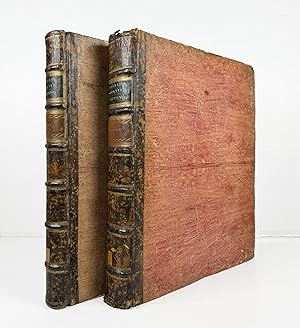
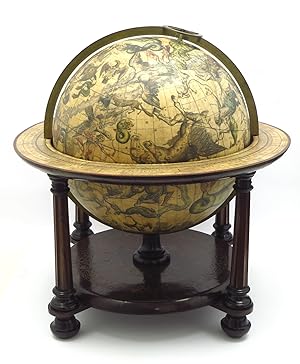
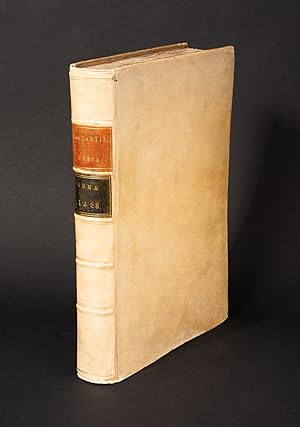
![Seller image for [Opera omnia]. Bologna, 1599-1668. 13 volumes. Folio (35 x 24 cm). With engraved title-page to each volume, engraved full-page portrait of Aldrovandi in 3 volumes and several thousand woodcut illustrations in text, mostly after designs by J. Ligozzi and many full-page. Blind-tooled vellum (ca. 1645 & ca. 1670), with a large centrepiece on each board (the 11 volumes dated 1599-1642 from a single block; the 2 volumes dated 1648 & 1667 from a different block), the spines uniformly gold-tooled in the 18th-century. for sale by ASHER Rare Books](https://pictures.abebooks.com/inventory/md/md22895418972.jpg)
![Seller image for OMNIA PLATONIS OPERA [In Greek] Edited by Marcus Musurus (c.1470-1517). -Timaeus Locrus, in Greek [Hellenistic paraphrase of the Timaeus in Doric dialect]. - DIOGENES Laertius (1st half of the 3rd century A.D.). Vita Platonis, in Greek. for sale by Buddenbrooks, Inc.](https://pictures.abebooks.com/inventory/md/md31168836206.jpg)

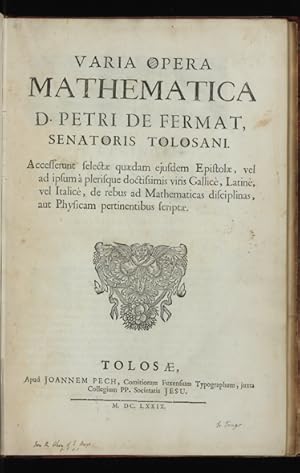
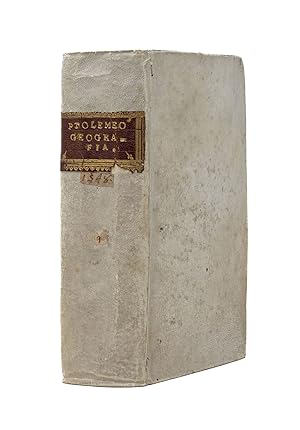
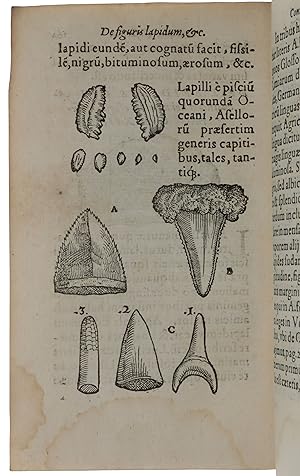
![Seller image for Omnia [ ] Latina Opera. [with] A dyaloge of syr Thomas More knyght. for sale by Sokol Books Ltd. ABA ILAB](https://pictures.abebooks.com/inventory/md/md31598421102.jpg)
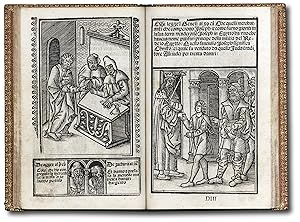
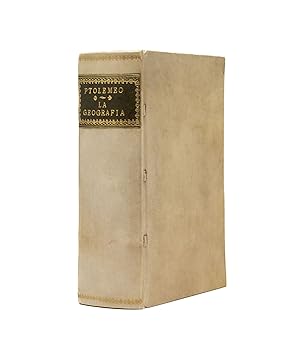
![Seller image for [Incipit a2r:] Opera De Facti E Precepti Militari for sale by Bruce McKittrick Rare Books, Inc.](https://pictures.abebooks.com/inventory/md/md31820550330.jpg)
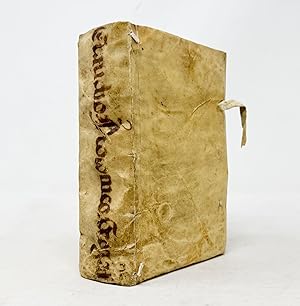

![Seller image for Globus Terrestris Novus [and] Globus Coelestis Novus Loca Terrae insigniora/sec. paraestant: Astron. Et Geogr./ observationes sistens,/ opera / Ioh. Gabr. Doppelmaieri / M.P.P, / concinne traditus / à / loh. Georg: Puschnero / Chalcographo Norib./ A.C. 1730 [and] Loca stellarum fixarum / sec. cel. Ioh. Hevlium / ad anum 1730 exhibens / Opera / I.G. Doppelmaieri M.P.P. / exacte concinatus / a/ Ioh. Geor. Puschnero / Chalcographo Norib. A.C. 1730. for sale by Daniel Crouch Rare Books Ltd](https://pictures.abebooks.com/inventory/md/md30752771259.jpg)
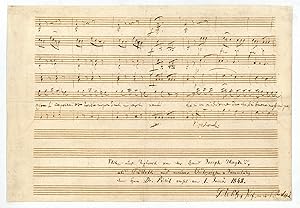
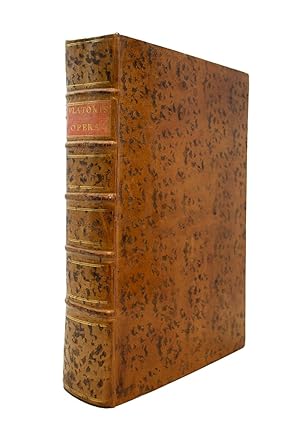
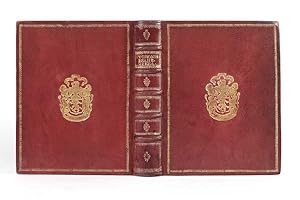
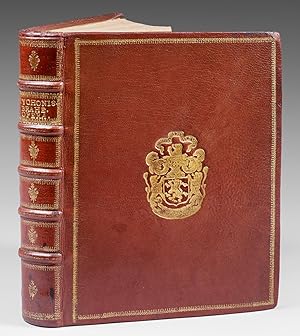

![Seller image for Il Costume Antico e Moderno o storia del governo, della milizia, della religione, delle arti, scienze ed usanze di tutti i popoli antichi e moderni privata coi monumenti dell' antichita e representata cogli analoghi disegni. [with] Del Costume antico e moderno di tutti i popoli del Dottore Giulio Ferrario. Indice generale per alfabeto e per materie preceduto da un saggio di supplimento alla detta opera e dall' indicazione delle più importanti scoperte e relazioni fatte.[with] Aggiunte e rettificazioni all' opera il costume antico e moderno di tutti i popoli cogli. for sale by Shapero Rare Books](https://pictures.abebooks.com/inventory/md/md31212297677.jpg)
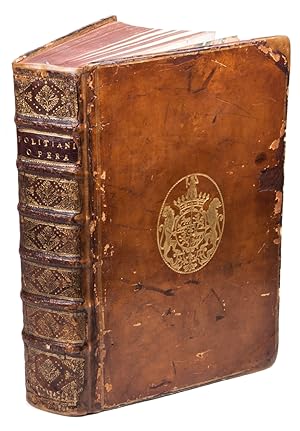
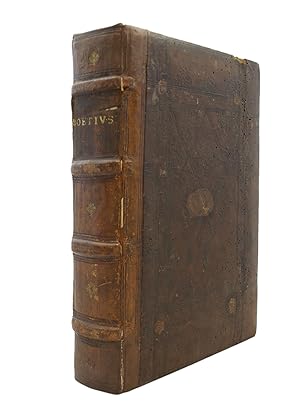
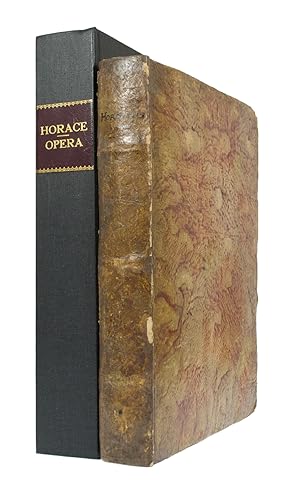

![Seller image for Opera posthuma [Opuscula astronomica]; viz. Astronomia Kepleriana, defensa & promota. Excerpta ex epistolis ad Crabtraeum suum. Observationum coelestium catalogus. Lunae theoria nova. Accedunt Guilielmi Crabtraei, Mancestriensis, Observationes coelestes. In calce adjiciuntur Johannis Flamstedii, Derbiencis, De Temporis Aequatione Diatriba. Numeri ad lunae theoriam horroccianam for sale by SOPHIA RARE BOOKS](https://pictures.abebooks.com/inventory/md/md30939733138.jpg)
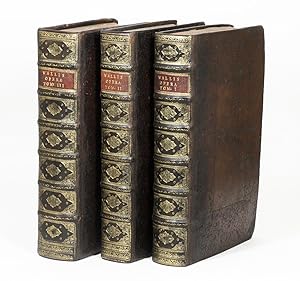
![Seller image for Opera di M. Bartolomeo Scappi, cvoco secreto di Papa Pio Quinto, divisa in sei libri. Nel primo si contiene il ragionamento che fa l Autore con Gio suo discepolo. Nel secondo si tratta di diverse vivande di carne, si di quadrupedi, come di volatili. Nel terzo si parla della Statura, e stagione de pesci. Nel quarto si mostrano le liste del presentar le vivande in tavola, cosi di grasso come di magro. Nel quinto si contiene l ordine di far diverse sorti di paste, & altri lavori. Nel sesto, & ultimo libro si ragiona de convale scenti, & molte altre sorti di vivande per gli infermi [ ]. for sale by Librairie Camille Sourget](https://pictures.abebooks.com/inventory/md/md31514613061.jpg)
